art history final exam
1/80
There's no tags or description
Looks like no tags are added yet.
Name | Mastery | Learn | Test | Matching | Spaced |
|---|
No study sessions yet.
81 Terms
Church of Sainte‐Foy, France, Conques, c. 1050–1130 and Last Judgement tympanum
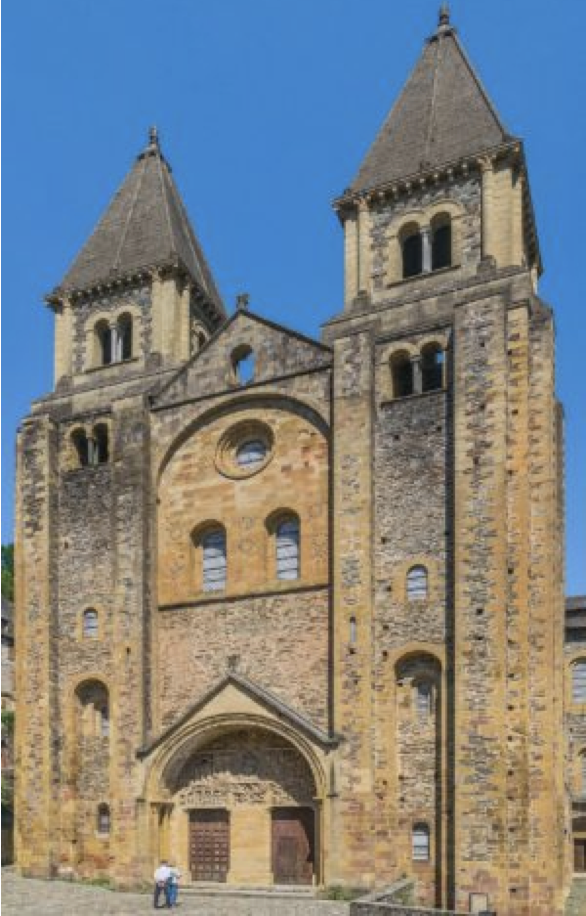
Round Arch
a vertical curved structure that spans an elevated space formed in a continuous curve, especially in a semicircle
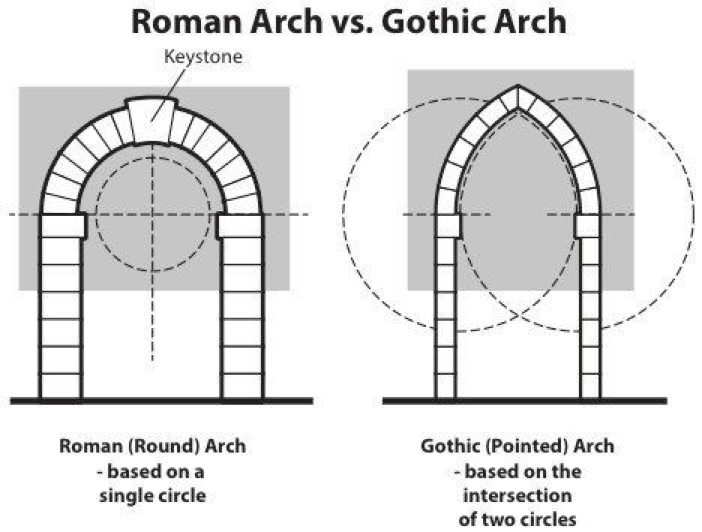
Pilgrammage
a journey to a sacred place made as an act of religious devotion
Reliquary
container holding the remains (relics) of a saint or holy person
Barrel Vault
an elongated or continuous semicircular vault, shaped like a half-cylinder. Also known as tunnel vault.

Tympanum
the semi-circular or triangular decorative wall surface over an entrance, door or window, which is bounded by a lintel and an arch. It often contains relief sculpture or other imagery or ornaments
Last Judgment tympanum, Church of Sainte‐Foy, France, Conques, c. 1050–1130
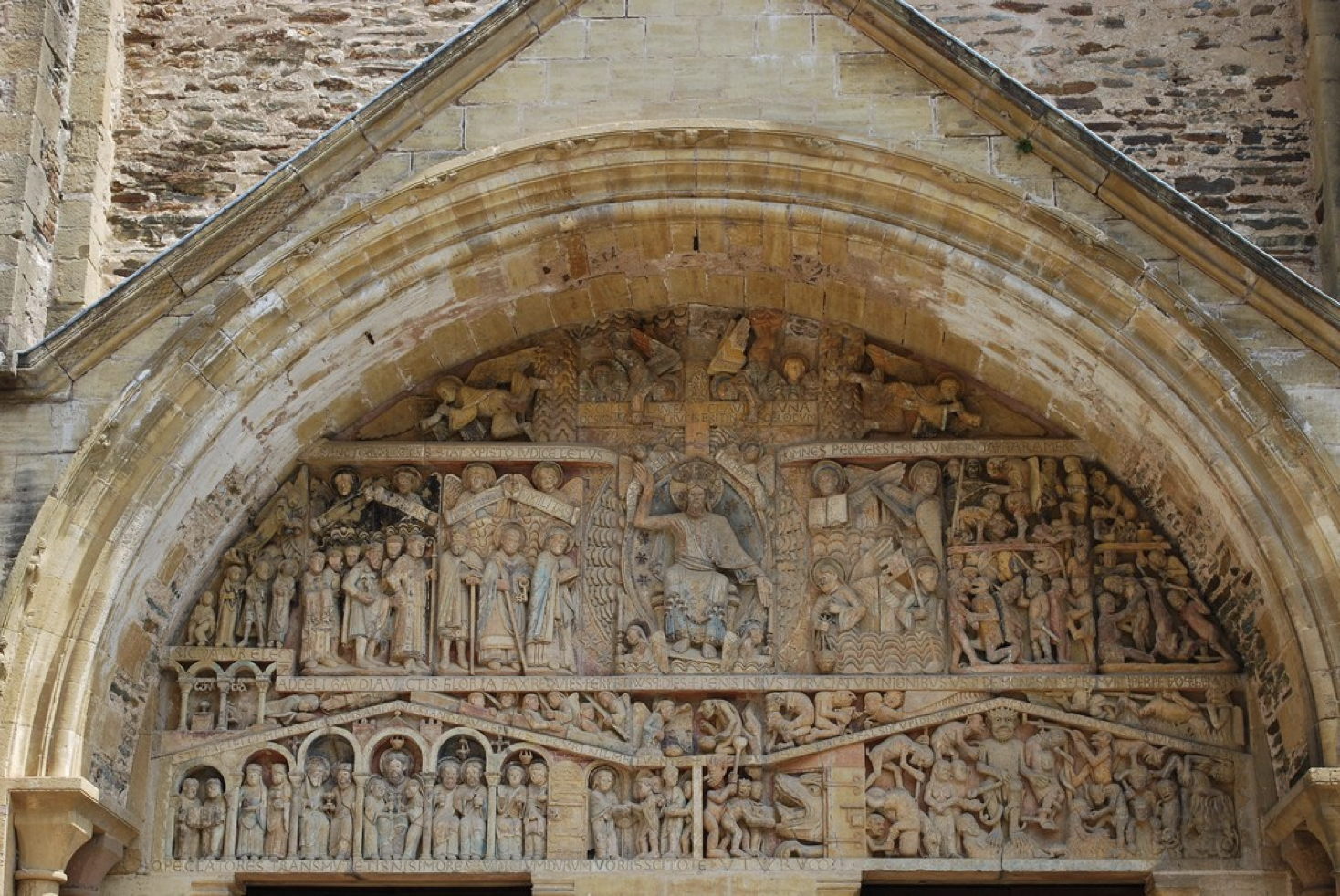
Master of Taüll, apse painting, Sant Clement in Taüll, c. 1123 (Museu Nacional d’Art de Catalunya , Barcelona)
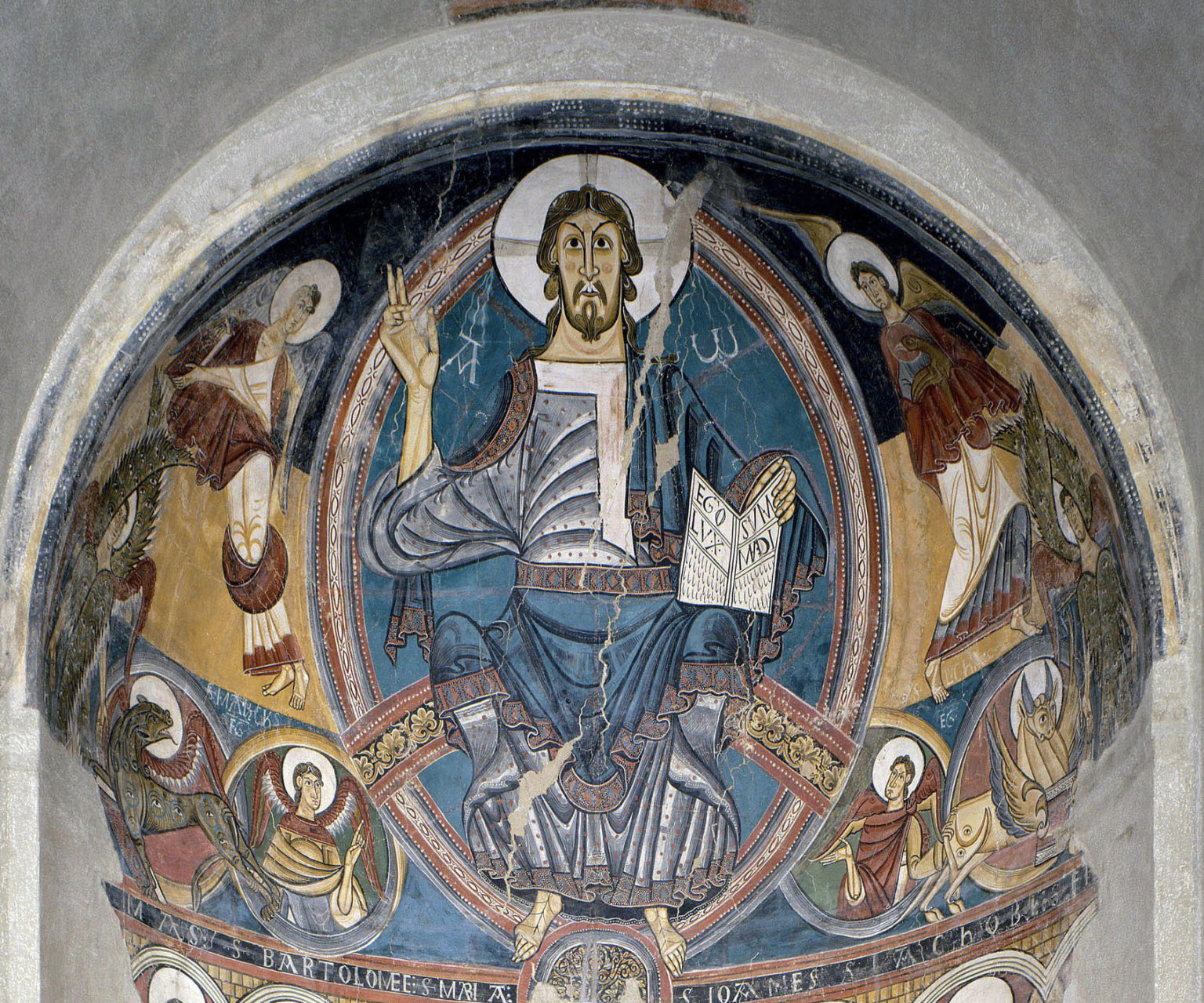
Crusades
a series of religious wars initiated, supported, and sometimes directed by the Christian Latin Church in the medieval period.
Basilica of St Denis, Paris
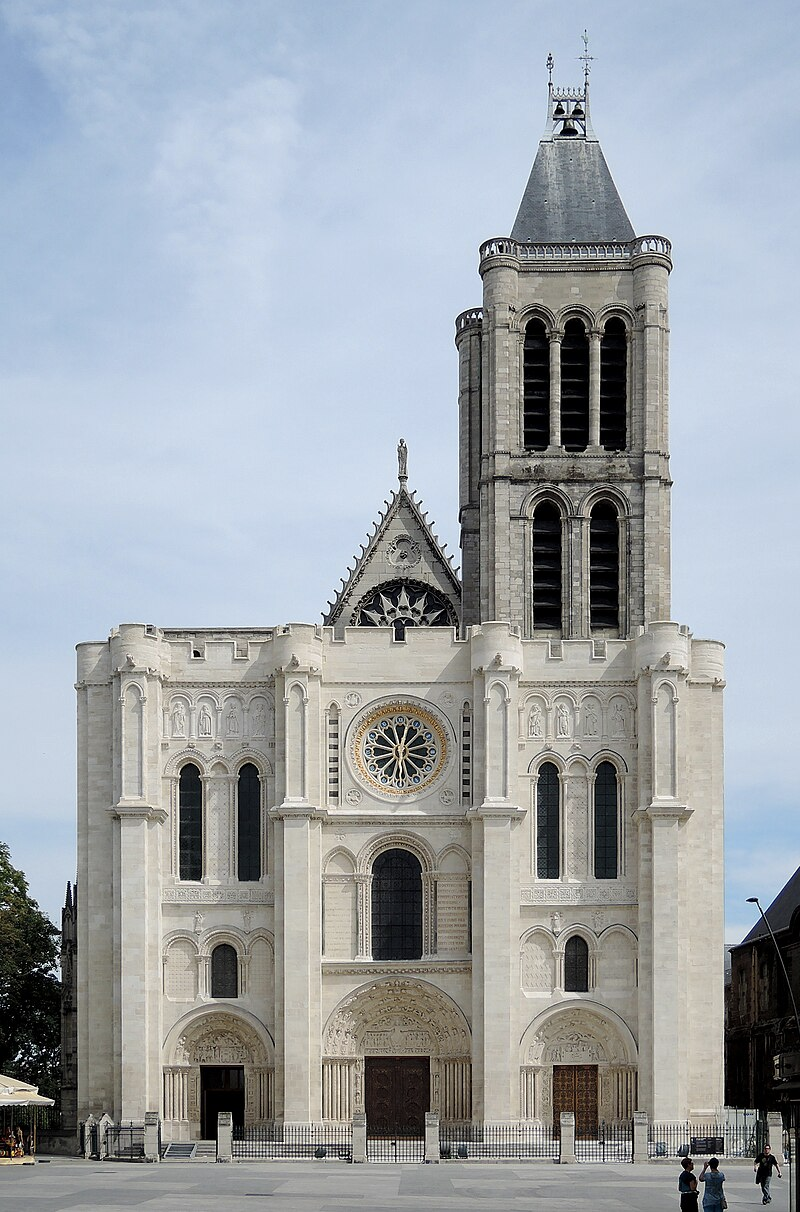
West façade, Amiens Cathedral
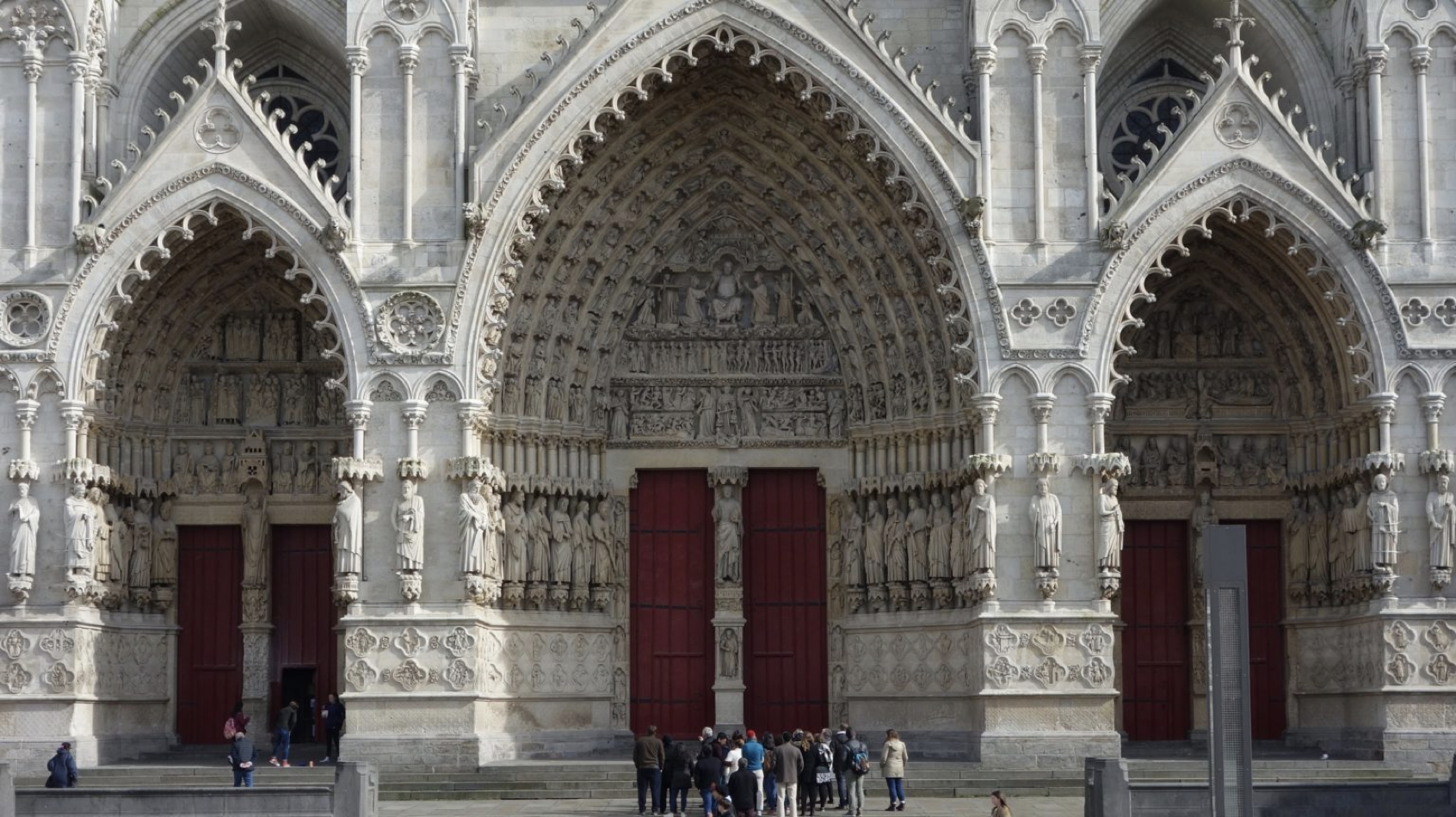
Pointed Arch

an architectural element characterized by a pointed apex at the top, which distributes weight more efficiently than a traditional rounded arc
Ribbed Vault
a stone vault with a thin web that is set within a framework of ribs.
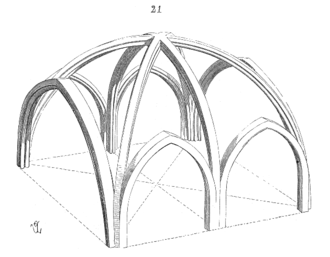
Flying Buttress
a projecting structure of masonry or wood for supporting or giving stability to a wall or building that is not in contact with the wall at ground level
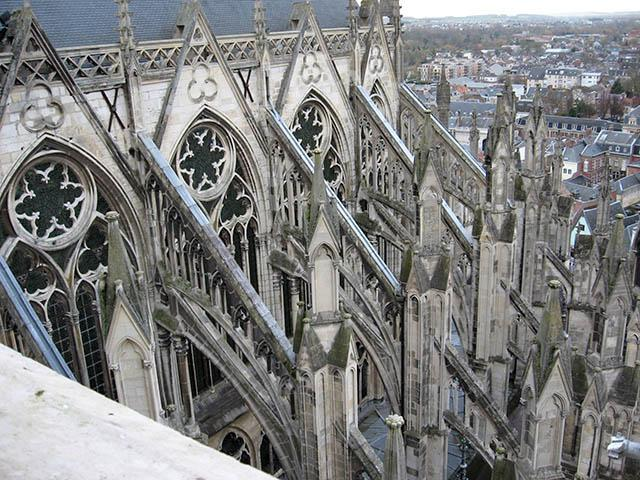
Tracery
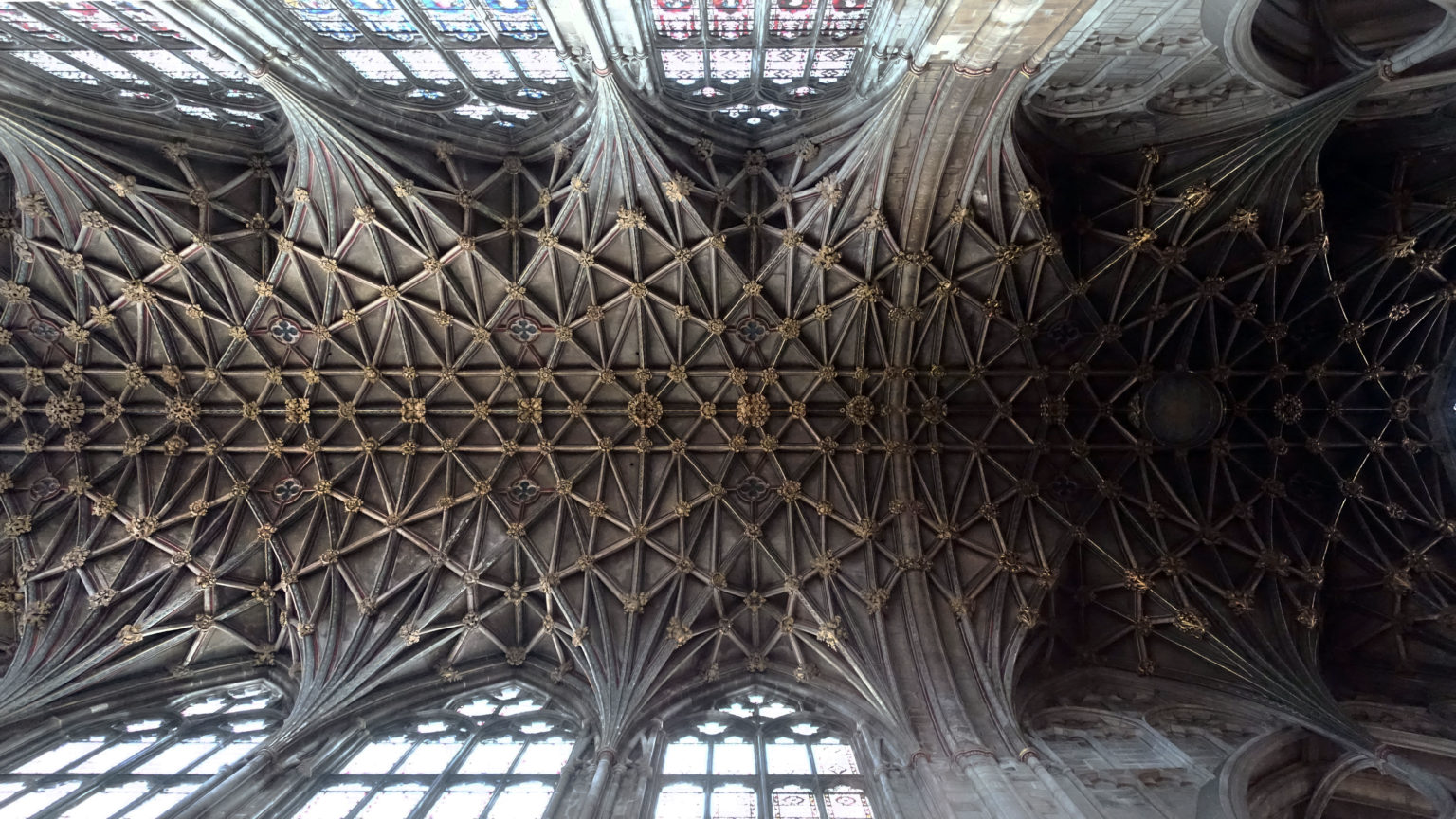
an architectural device by which windows are divided into sections of various proportions by stone bars or ribs of moulding
Harrowing of Hell, the Melisende Psalter (Egerton 1139, 9v), 1131–1143
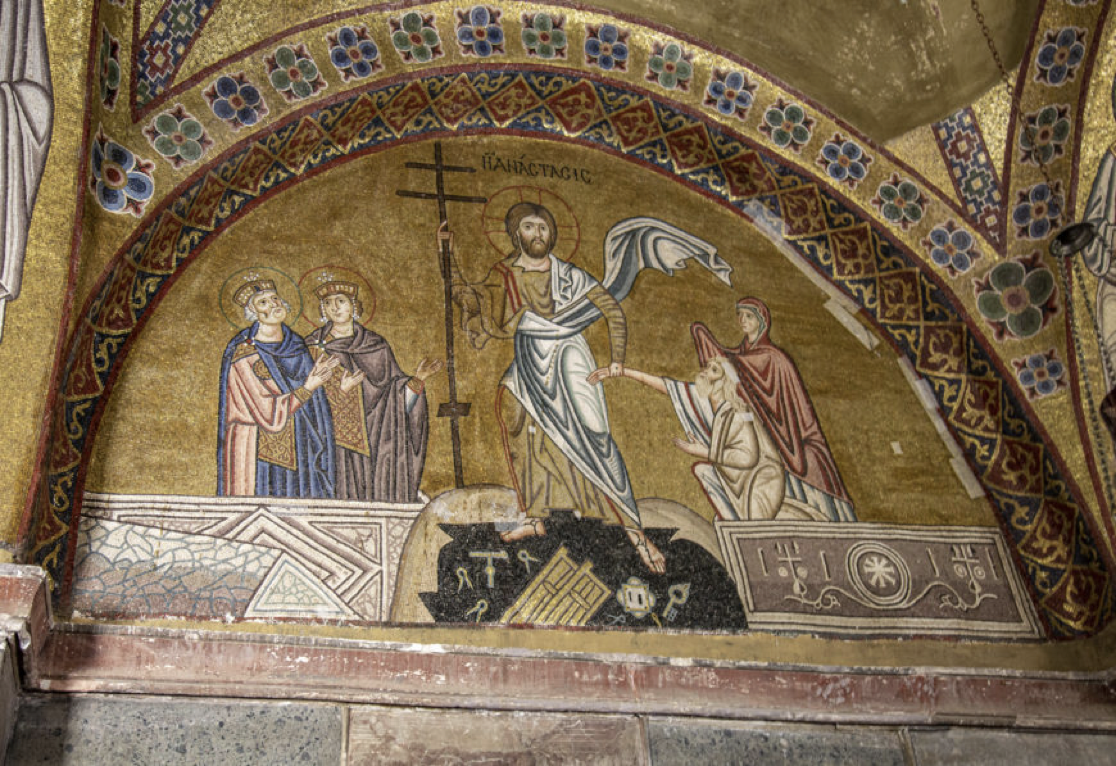
St. Matthew, Lindisfarne Gospels, Hiberno-Saxon, c. 715–25 CE
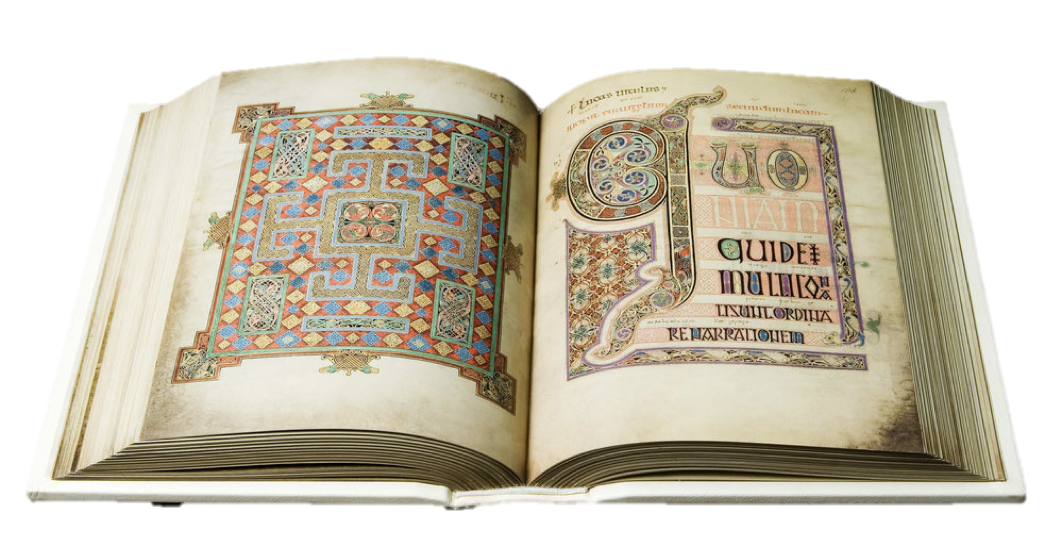
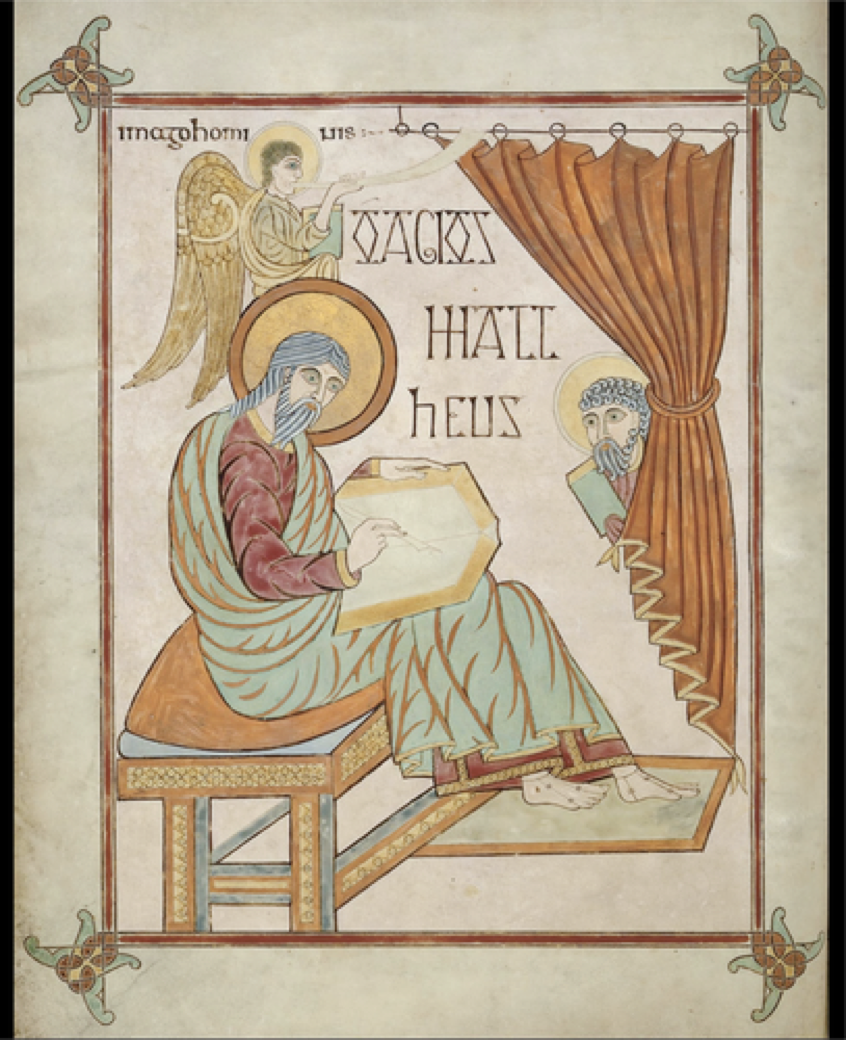
Cross Carpet Page, Lindisfarne Gospels, Hiberno-Saxon, c. 715–25 CE
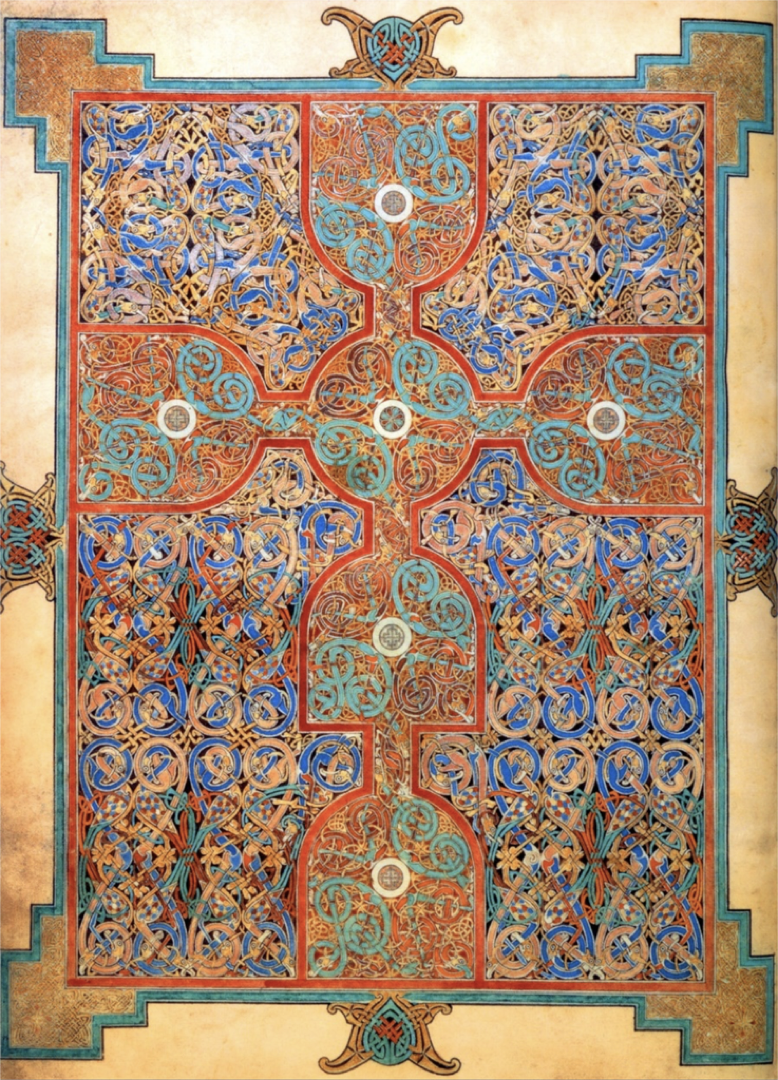
Chi Rho Iota Page, Book of Kells, Hiberno-Saxon, late eighth or early ninth century CE
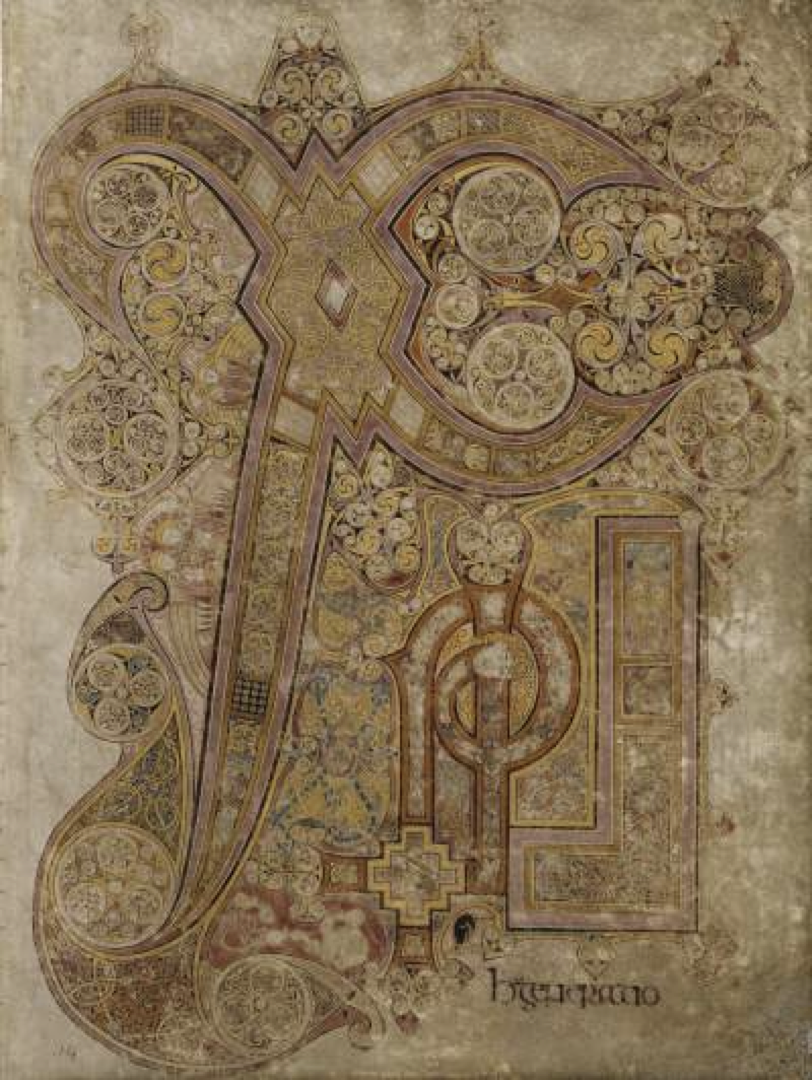
Palatine Chapel, Aachen, Carolingian, 792–805 CE
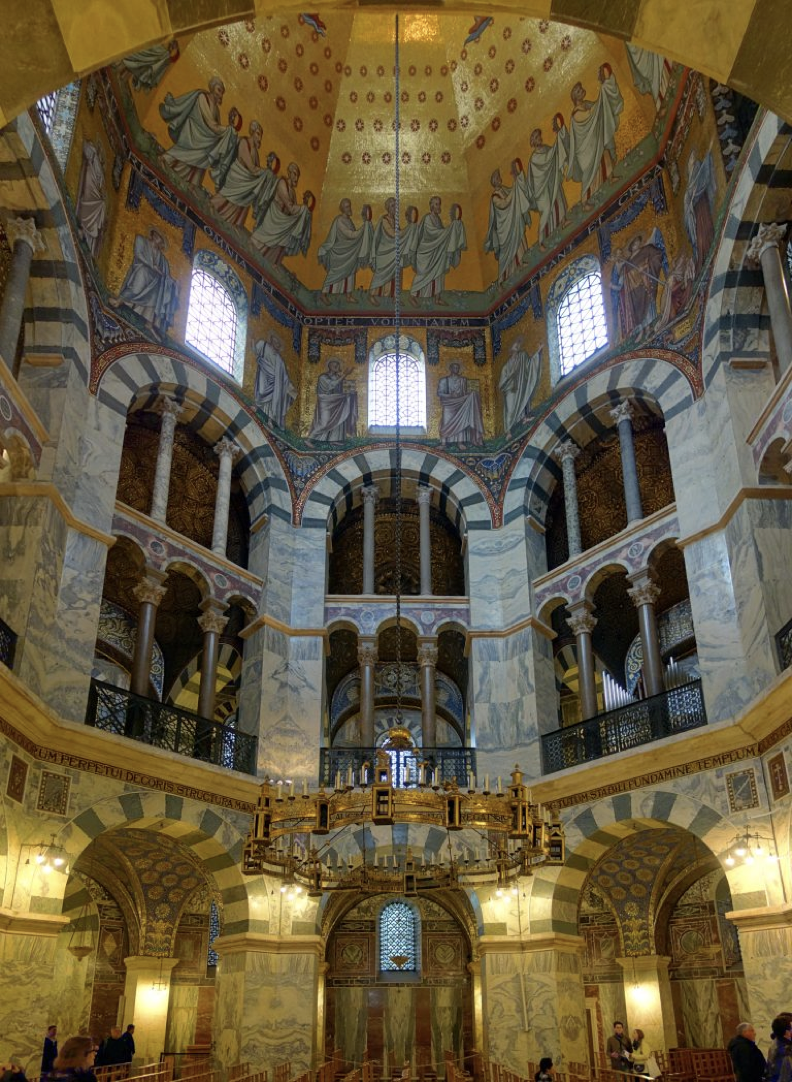
Manuscript
From the Latin phrase manu scriptus or “written by hand,” a book written and produced by hand. During the Middle Ages, before the advent of printing in the fifteenth century, all books were manuscripts.
Folio
A piece of paper or vellum; a single page in a book. When detached from a book, often called a leaf. In pre-modern practice folios are often only numbered on one side; modern page numbering would thus result in twice as many pages as folios in the same book
Carpet Page
a full page in an illuminated manuscript containing intricate, non-figurative, patterned designs. They are a characteristic feature of Insular manuscripts, and typically placed at the beginning of a Gospel Book
Incipit
Latin for “here begins.” Refers to the opening word or words of a medieval Western manuscript or early printed book.
Golden Buckle, from Sutton Hoo burial, Anglo-Saxon, c. 600–50 CE
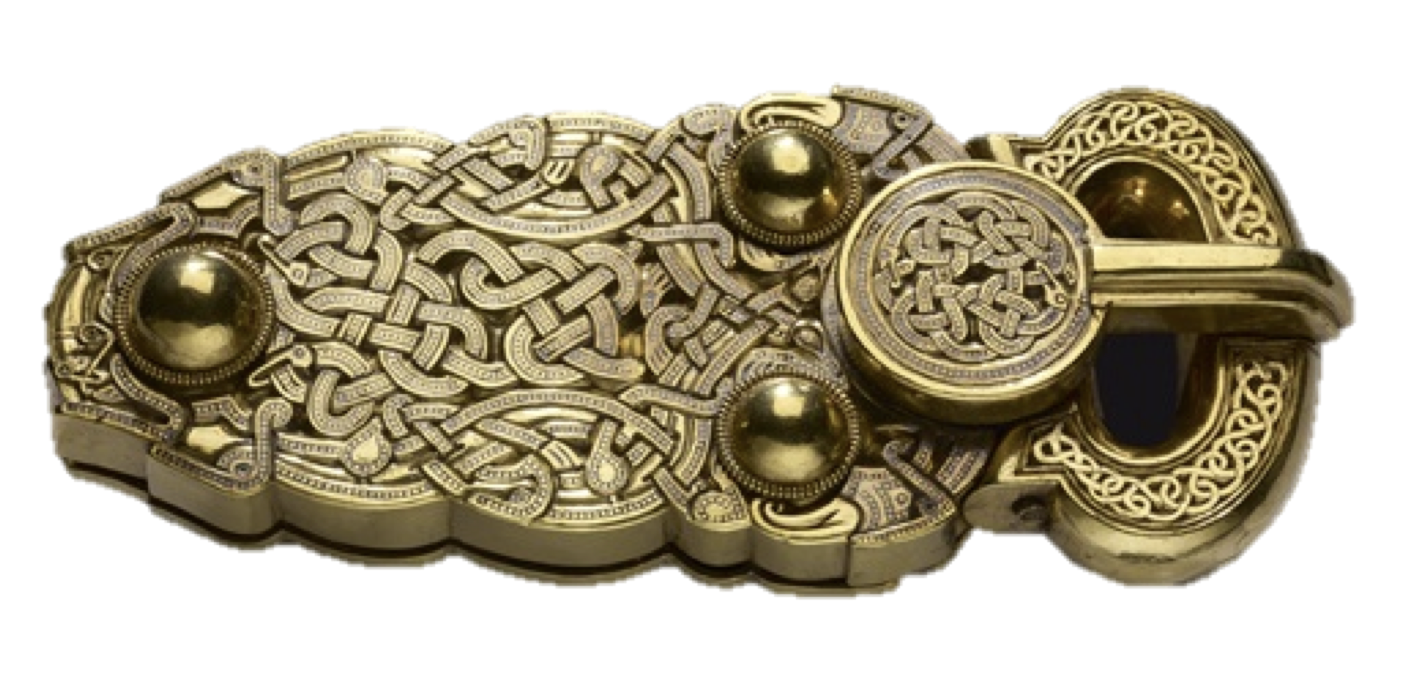
Jelling stone raised by King Bluetooth circa 986
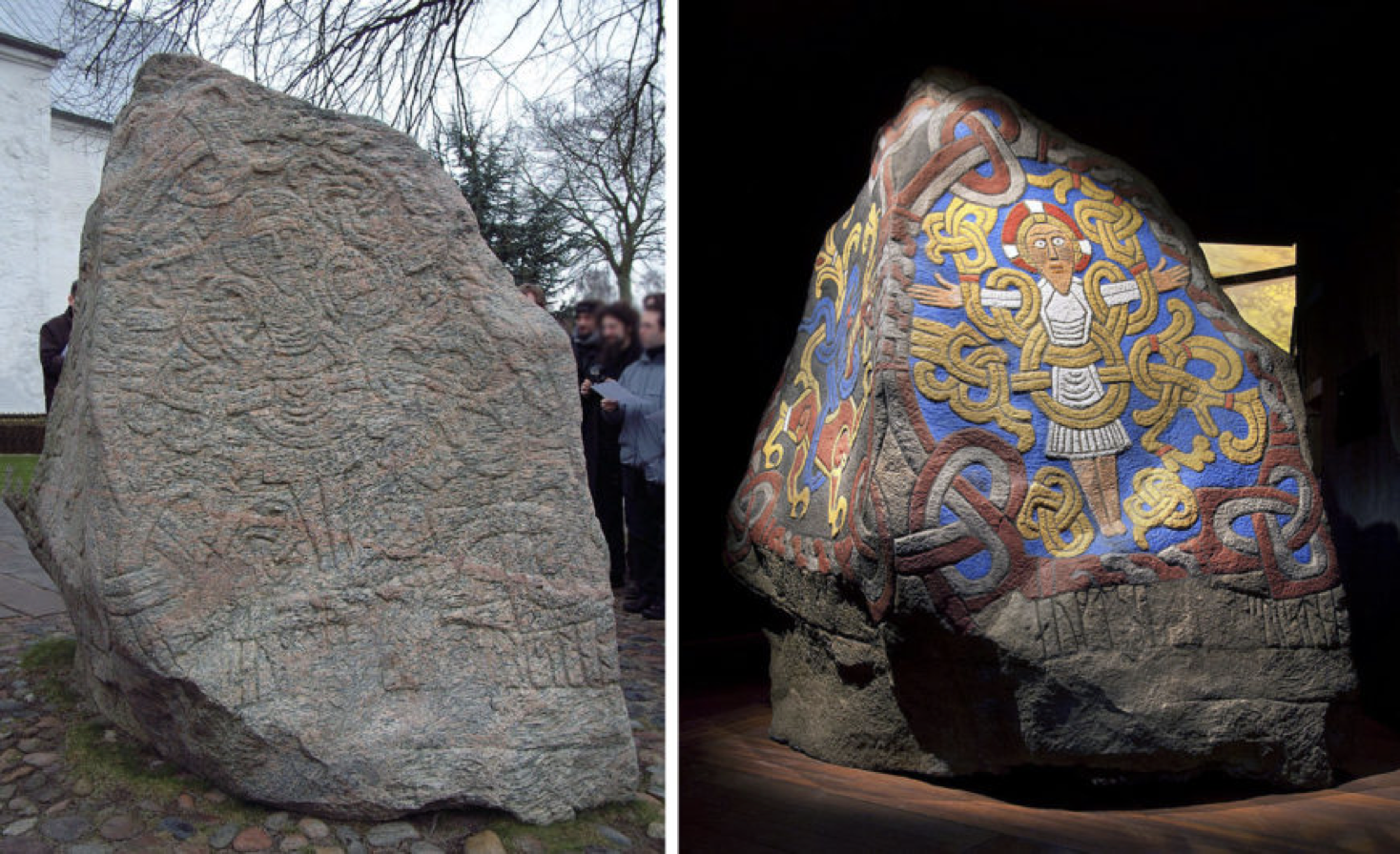
Urnes Stave Church, c. 1132, wood, Ornes, Norway
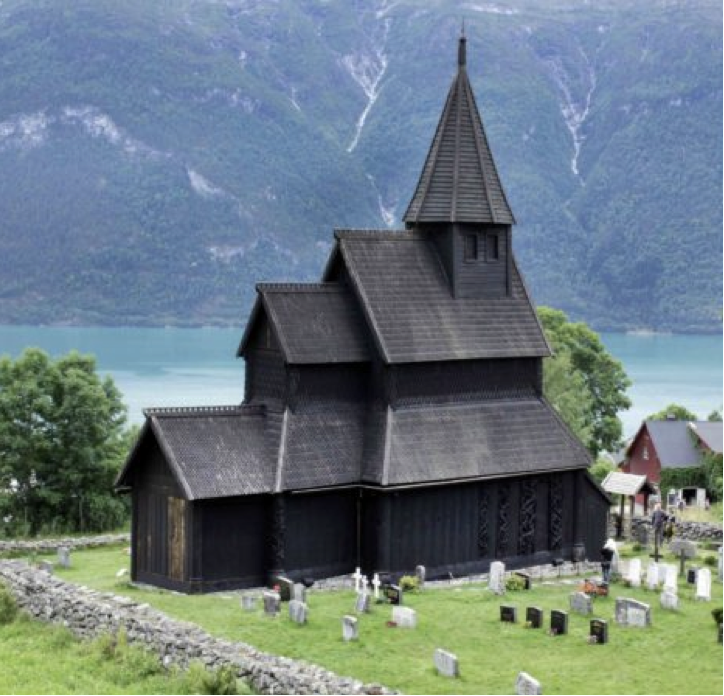
Barbarian
term used by ancient Greek and Romans to refer to foreign peoples
Anglo-Saxon
a cultural group who spoke traced their origins to Germanic settlers and inhabited much of what is now England and south-eastern Scotland in the Early Middle Ages. This period in Britain is considered to have started by about 450 and ended in 1066, with the Norman Conquest.
Runestone
a raised stone with a runic inscription; the term can also be applied to inscriptions on boulders and on bedrock
Stave
one of a number of narrow strips of wood, or narrow iron plates, placed edge to edge to form the sides, covering, or lining of a vessel or structure
Animal Style
used to describe the “zoomorphic” or animal-based design motifs popular among Anglo-Saxon artisans during the medieval period. abstract animal motifs merge with geometric and organic motifs, creating a lively and intricate pattern, especially in metalwork.
Colossal Head, Olmec Culture, La Venta, Mexico, 900–400 BCE
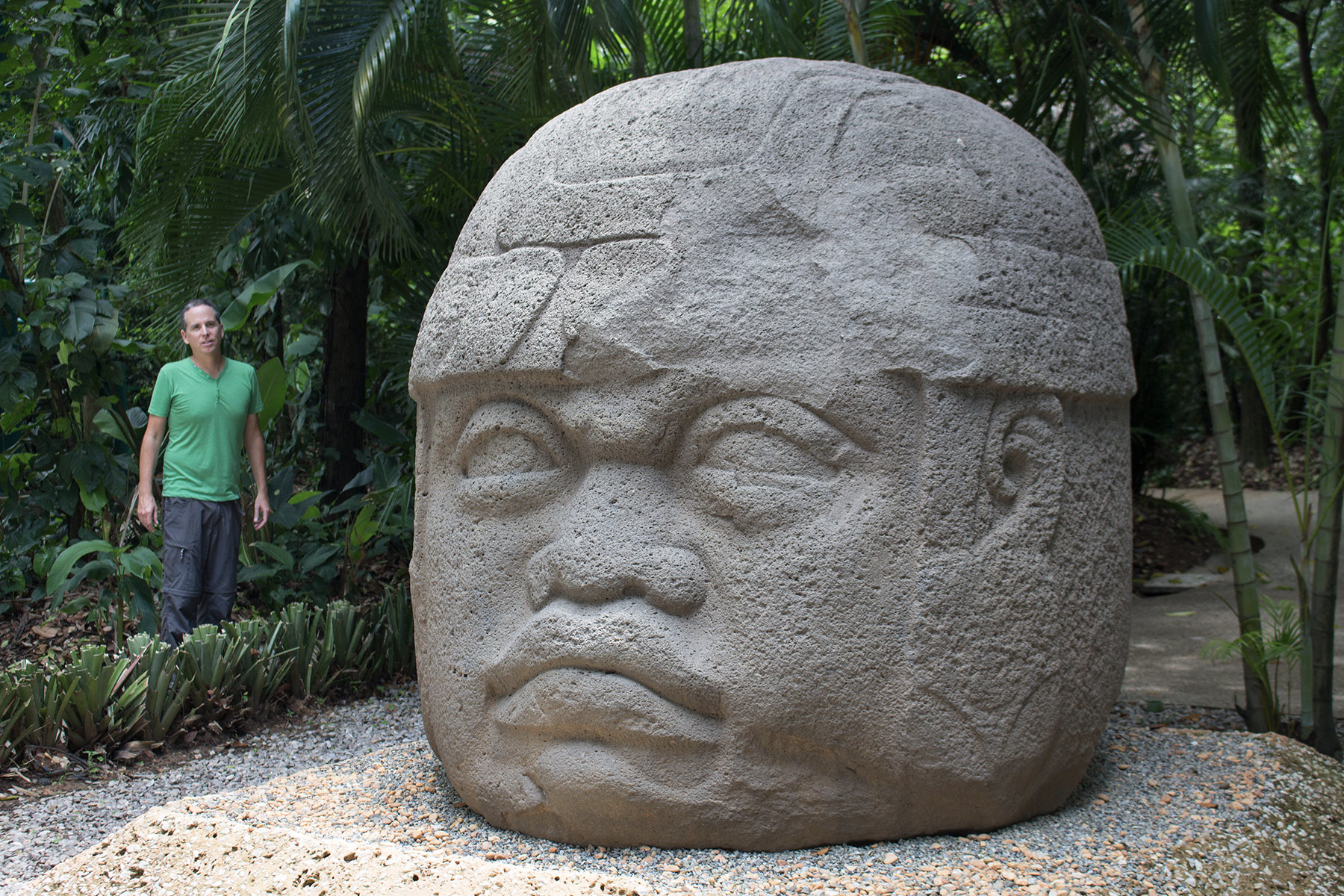
Pyramid of the Sun, Teotihuacan Culture, Mexico, 150–225 CE
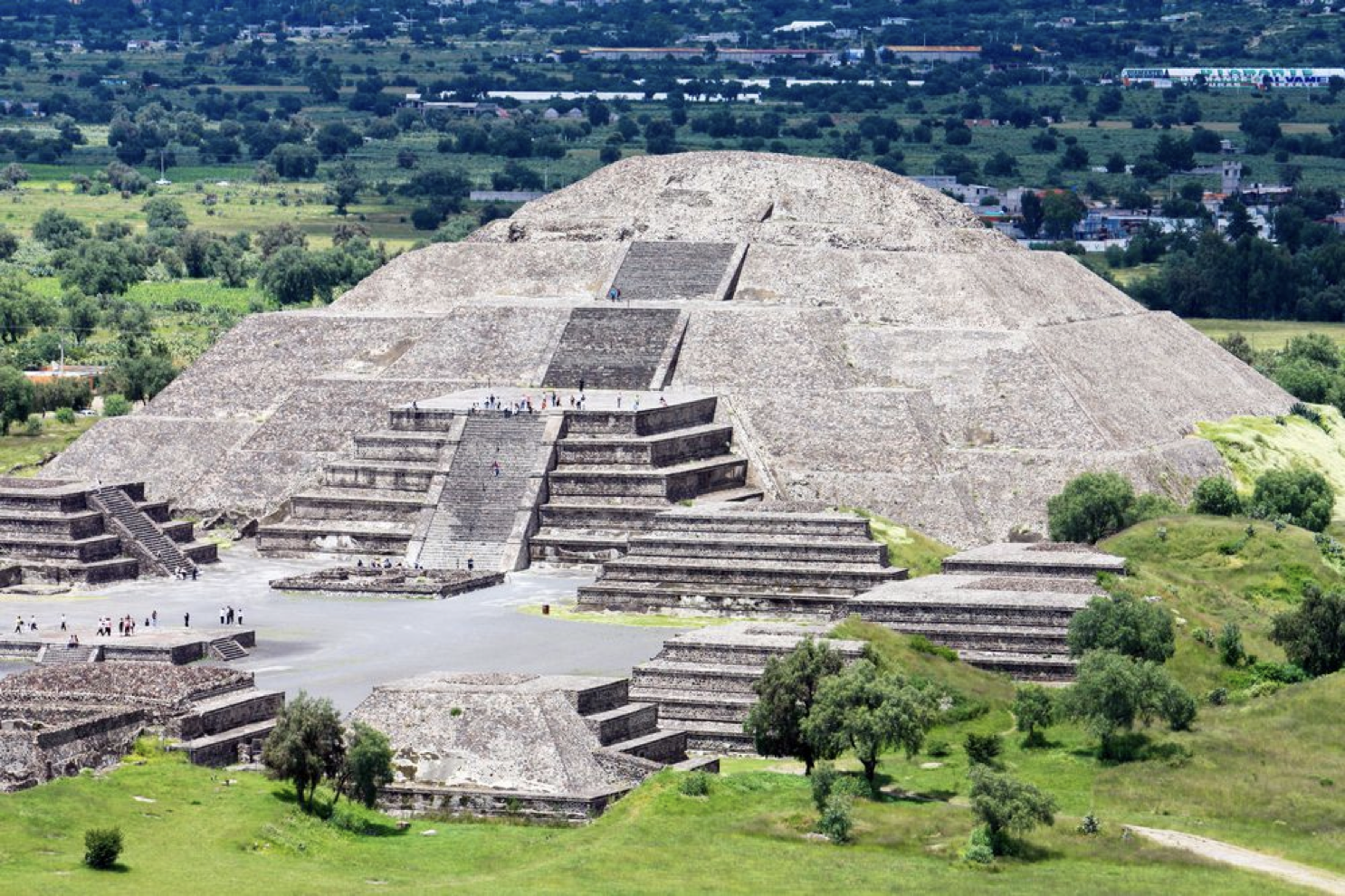
Lintel 24: Shield Jaguar and Lady Xok, Yaxchilan, Mexico, c. 725 CE
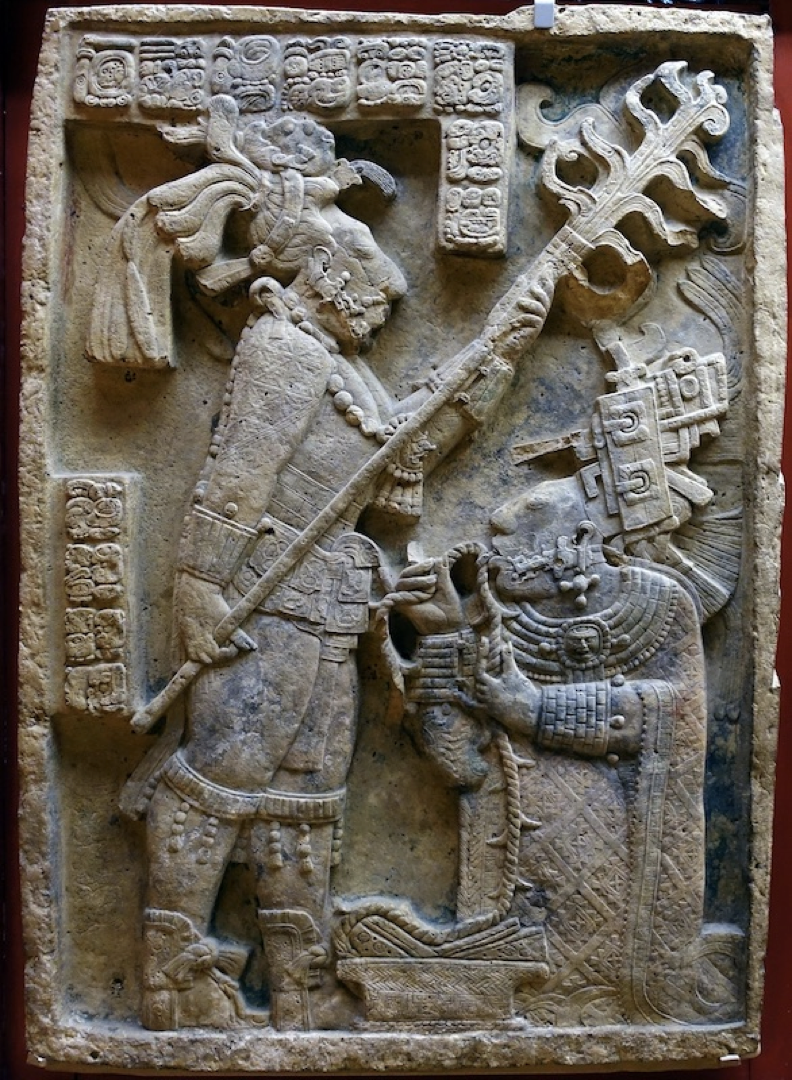
Raimondi Stela, Chavín Culture, Peru, c. 500–200 BCE
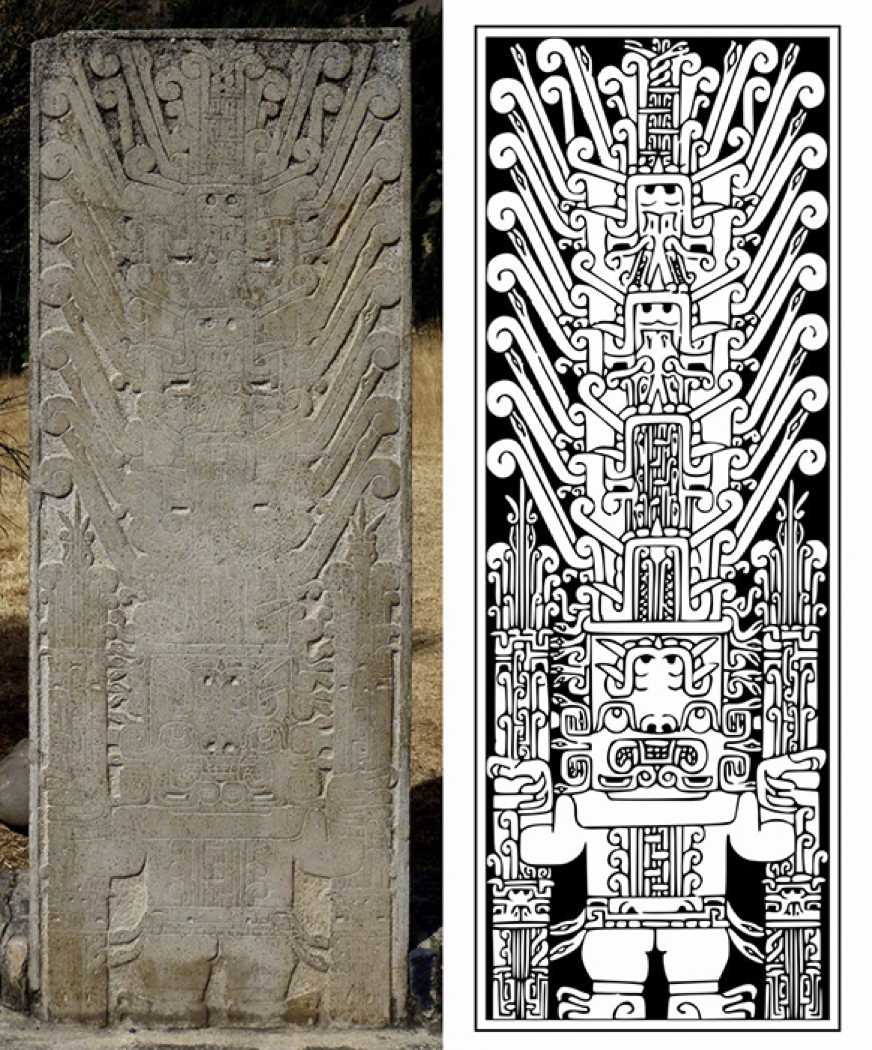
Hummingbird Geoglyph, Nazca Culture, Peru, c. 100 BCE–800 CE
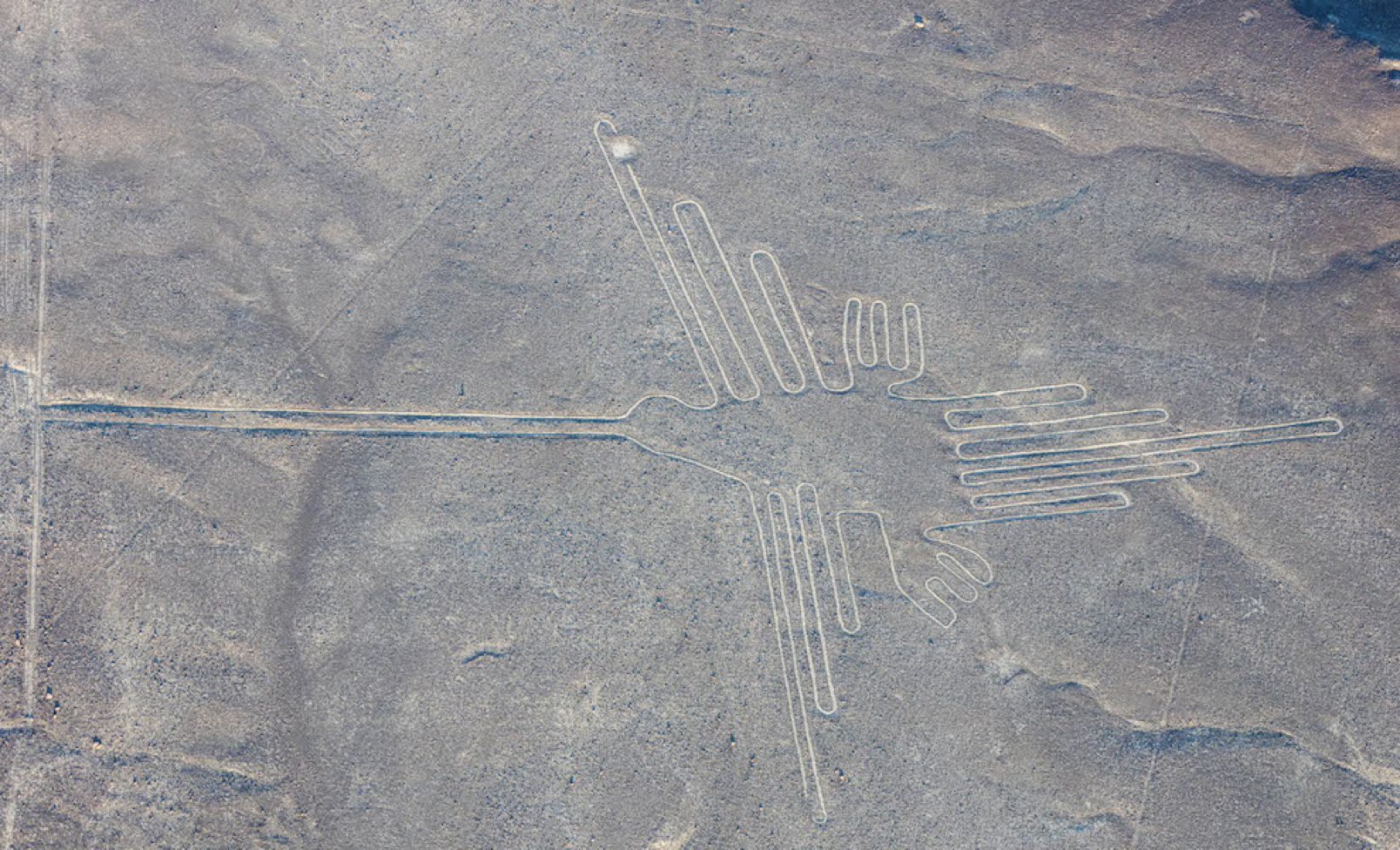
Precolumbian
refers to the time from the original settlement of North and South America in the Upper Paleolithic period through European colonization, which began with Christopher Columbus's voyage of 1492
Talud-tablero
an architectural style used in temples, pyramids and platforms in Pre-Columbian Mesoamerica. A steeply sloping wall is surmounted by a table-like, right-angled panel with an inset . The technique was used primarily at Teotihuacán.
Contour rivalry
an artistic technique used to create multiple possible visual interpretations of an image. An image may be viewed as depicting one thing when viewed in a certain way; but if the image is flipped or turned, the same lines that formed the previous image now make up an entirely new design.
geoglyph
large design or drawing created on the surface of the earth, by positioning stones or removing earth or surface rock to create lines or spaces that contrast with the surrounding terrain.
Poverty Point, Louisiana, c. 1500 B.C.E
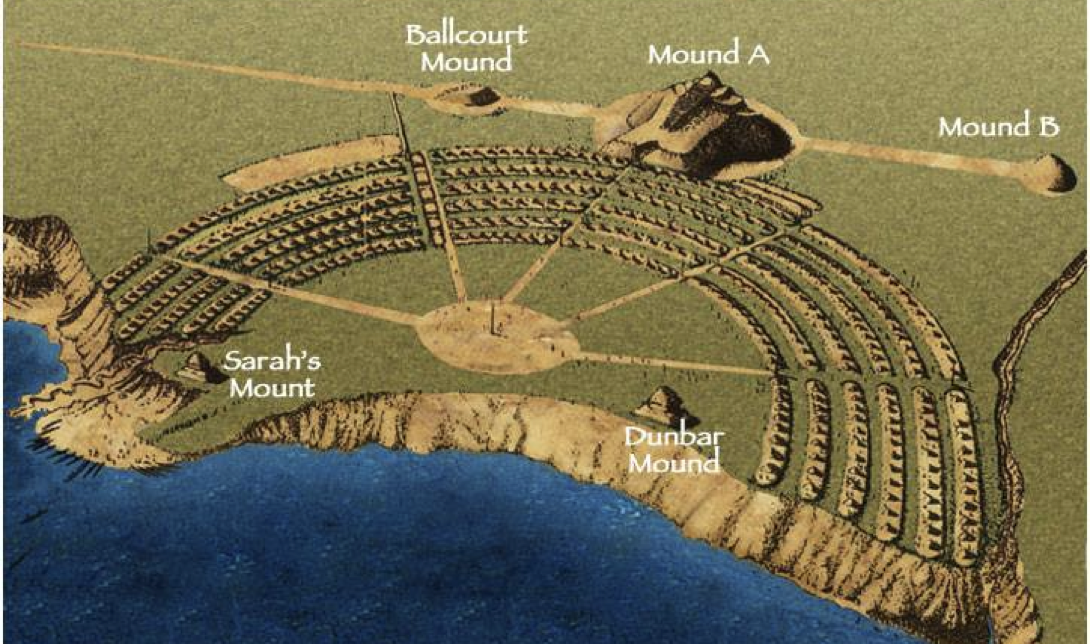
Birdman Tablet, approximately 4 inches high and 2 ½ inches wide, found at Monks Mound, Kahokia
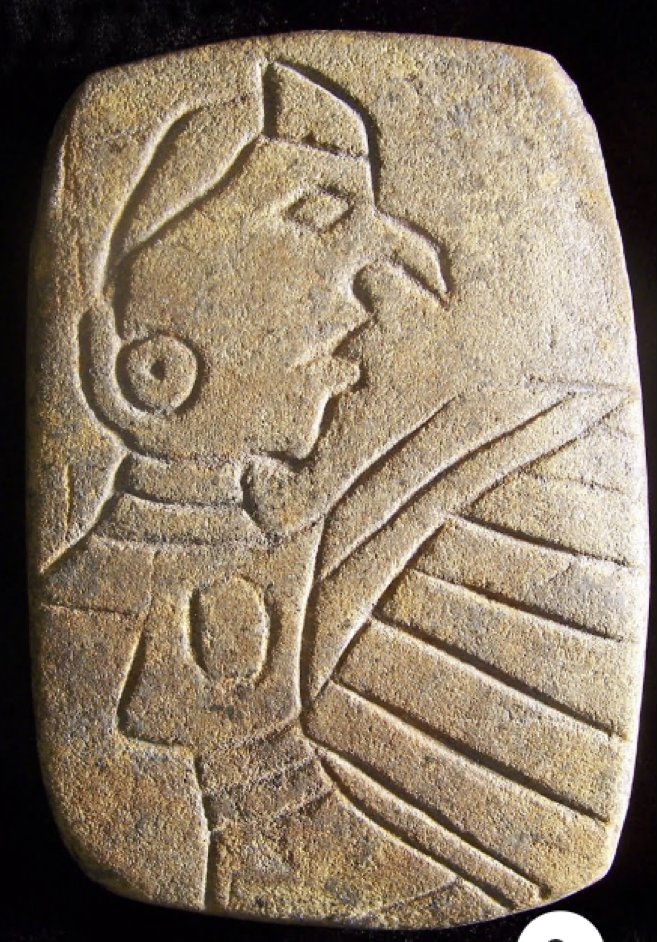
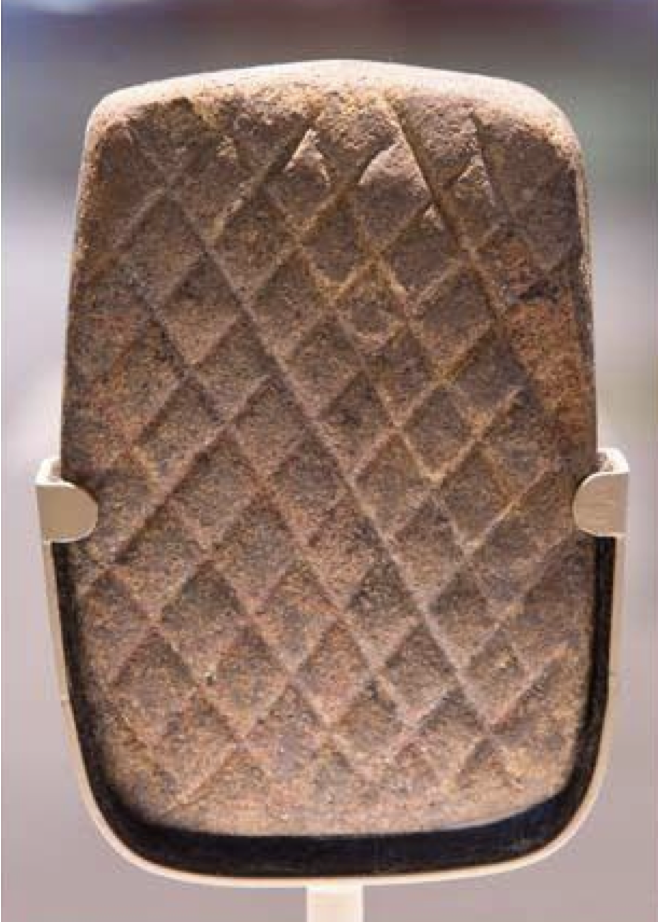
Cliff Palace, Ancestral Puebloan, 450–1300 C.E., sandstone, Mesa Verde National Park, Colorado

Earthworks
mounds built by Native Americans known as the Mound Builders. Ancient people who lived in the American Midwest commonly built effigy mounds, which are mounds shaped like animals (real or imaginary) or people.
Mound Builders
various Native American tribes who, in prehistoric and early historic times, erected the burial mounds and other earthworks in the Mississippi drainage basin and southeastern U.S.
Kiva
a chamber, built wholly or partly underground, traditionally used by male members of the Pueblo people for religious rites.
Terracotta Army, tomb of the Emperor of Qin, (d. 210 BCE), from Lintong near Xi’an, Shaanxi, Qin dynasty, 221-207 BCE
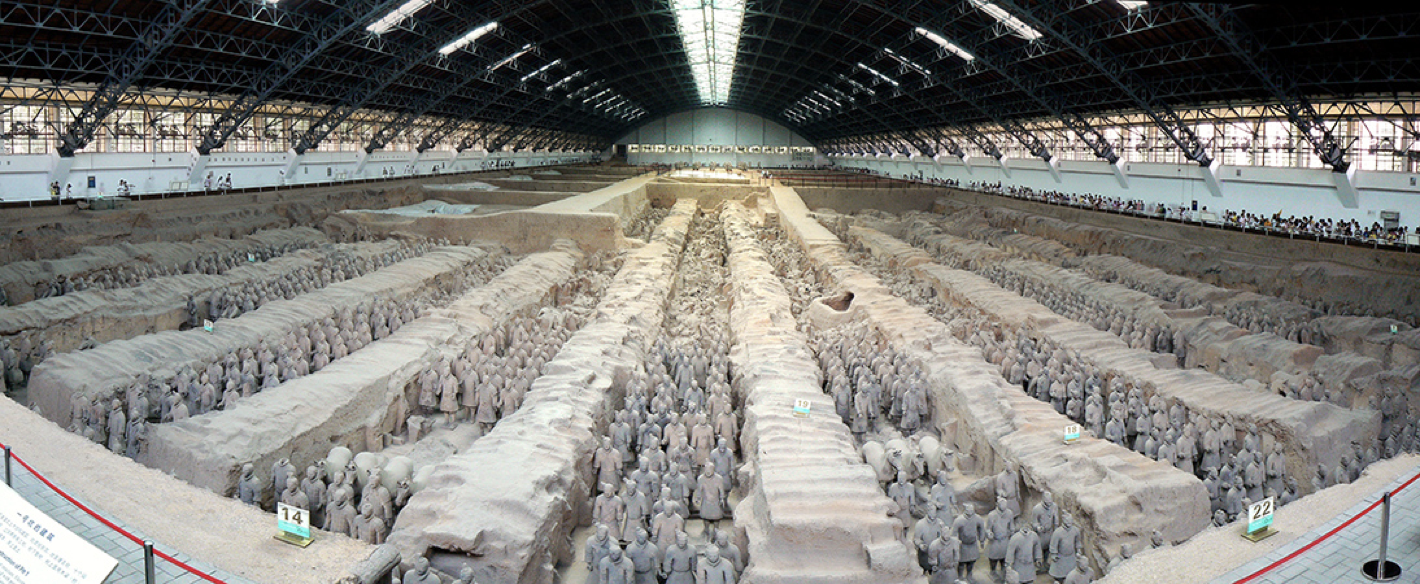
Funeral Banner from the Mawangdui Tombs, Changsa, c. 168 BCE, Han dynasty
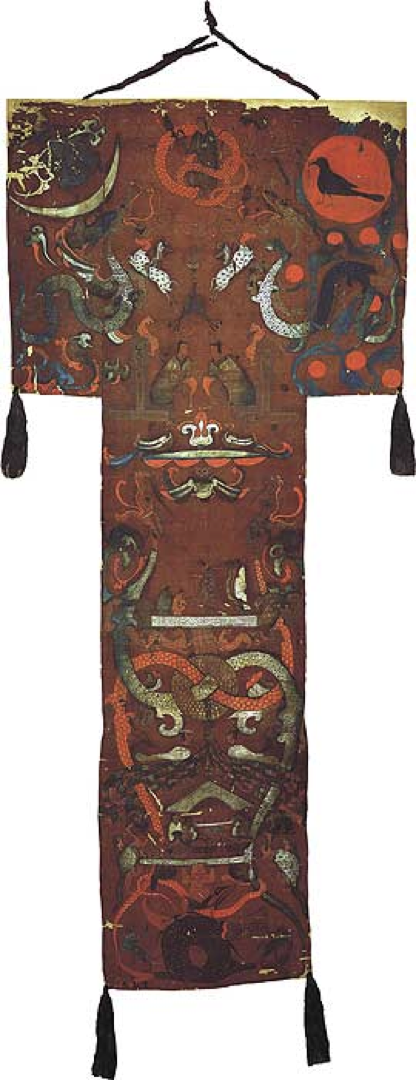
Colossal Buddha, cave 20 at Yungang, Shanxi, c. 460-93 CE, Northern Wei dynasty
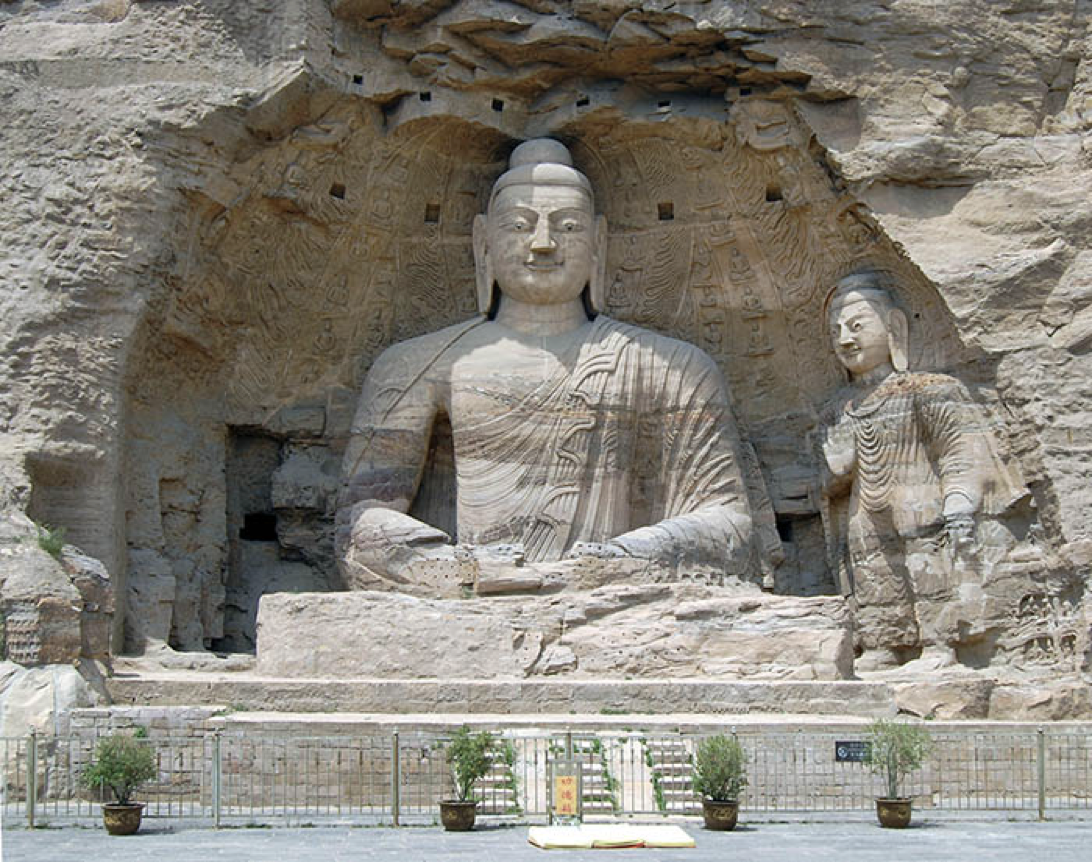
Guo Xi, Early Spring, early eleventh century CE, Northern Song dynasty
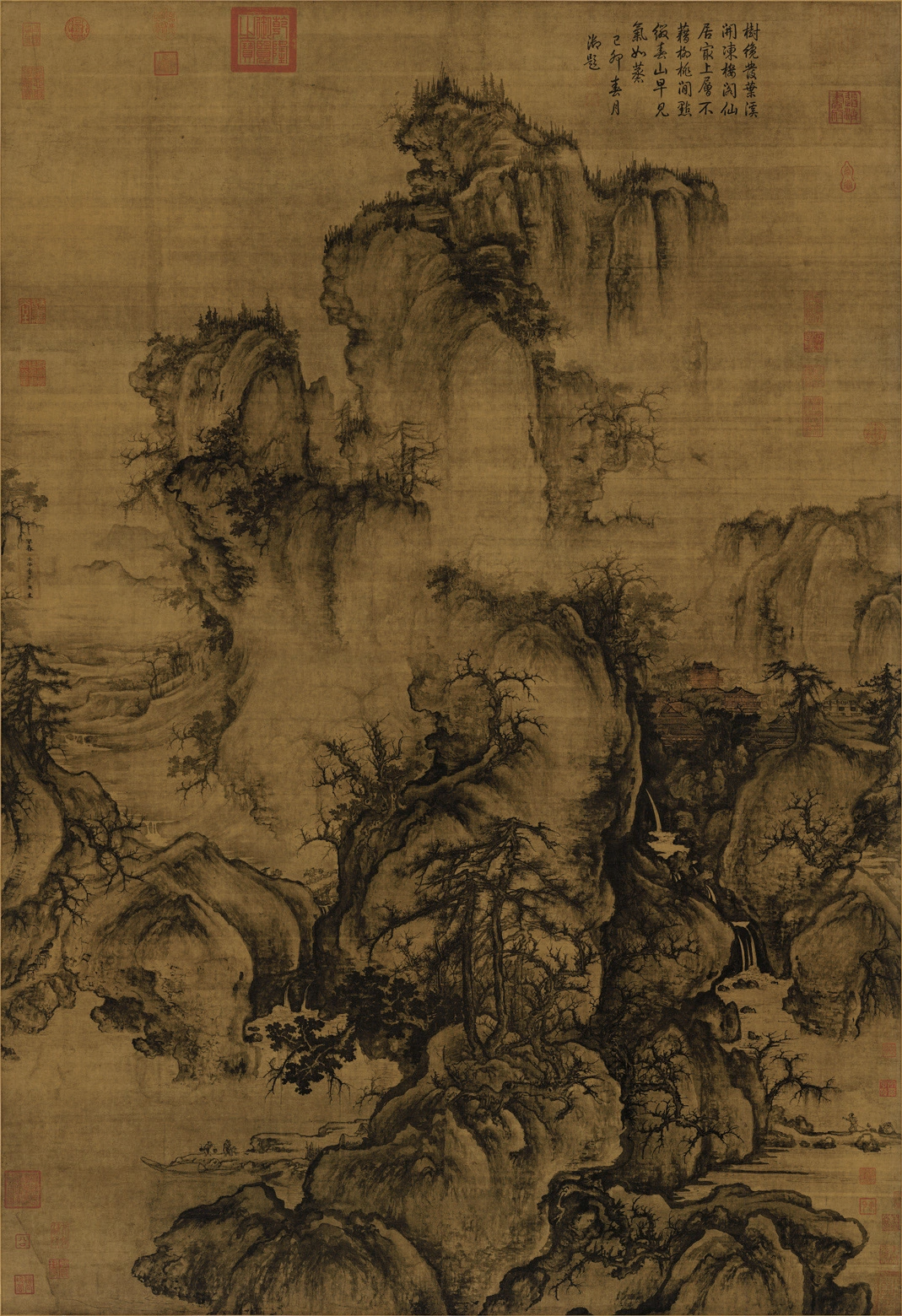
Horror vacui
a fear or dislike of leaving empty spaces, especially in an artistic composition.
Hanging scroll
typically used for vertical compositions. They are hung for display using a cord, which is attached to a thin wooden strip along the top of the silk mounting. There is a wooden rod at the bottom which provides the necessary weight for the painting to hang smoothly. It is also useful when the painting is rolled up for storage.
Main Hall at Ise Shrine, Mie prefecture
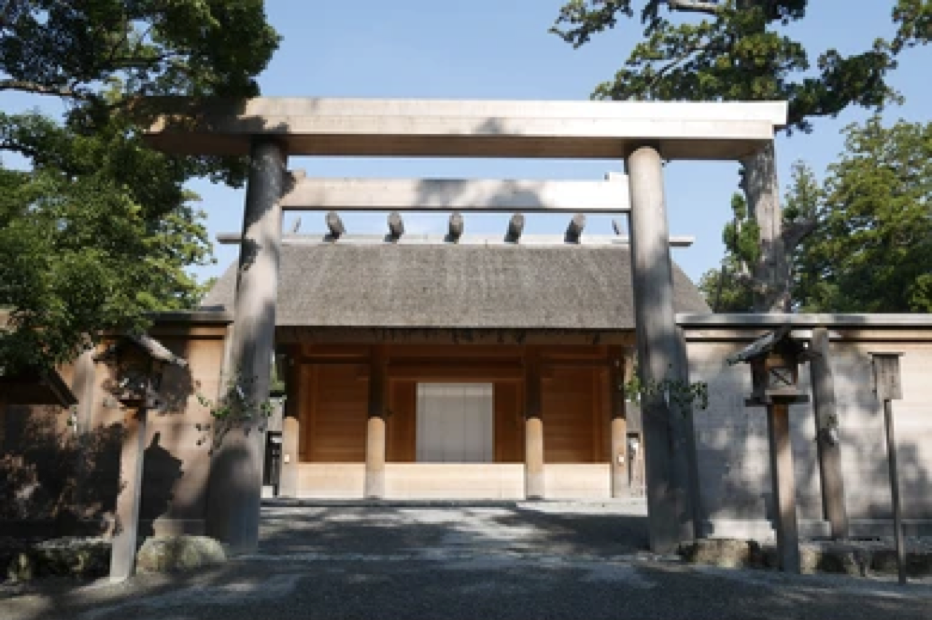
Hungry Tigress, from Tamamushi Shrine, Golden Hall, Hōryū-ji
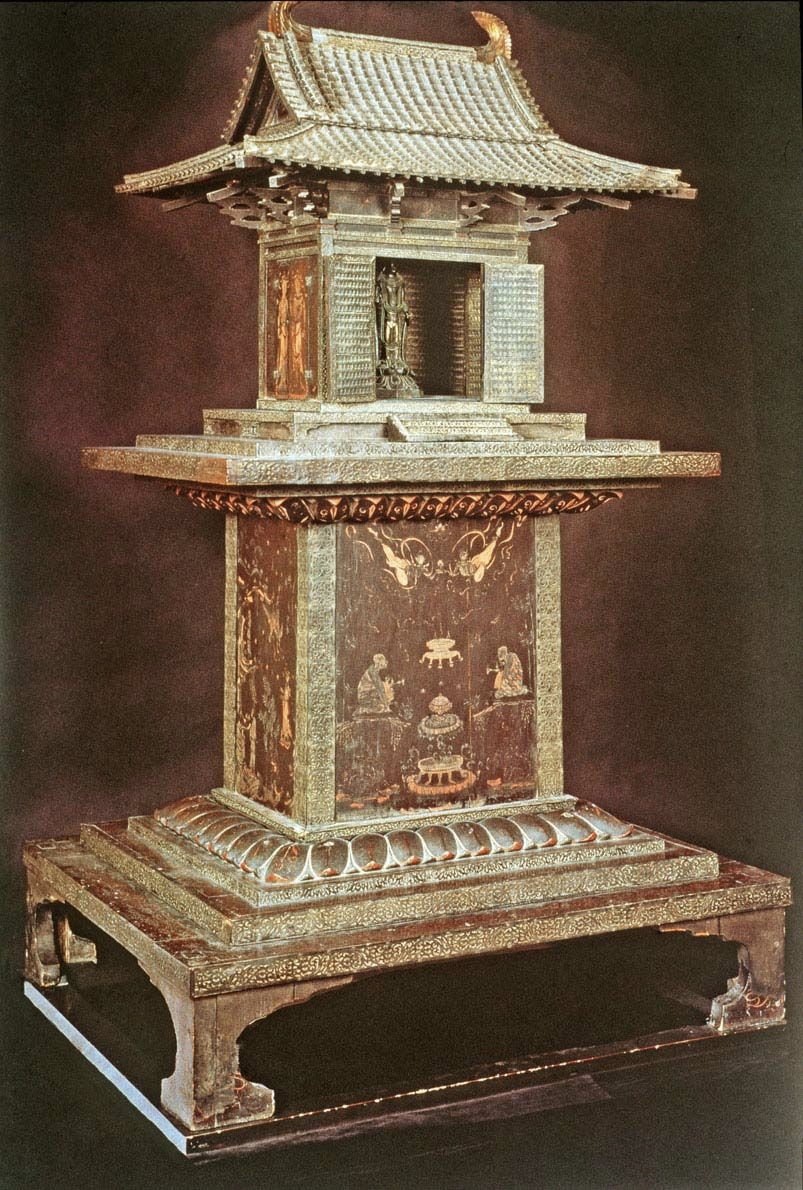
Yakushi Triad, Yakushi-ji temple, Nara
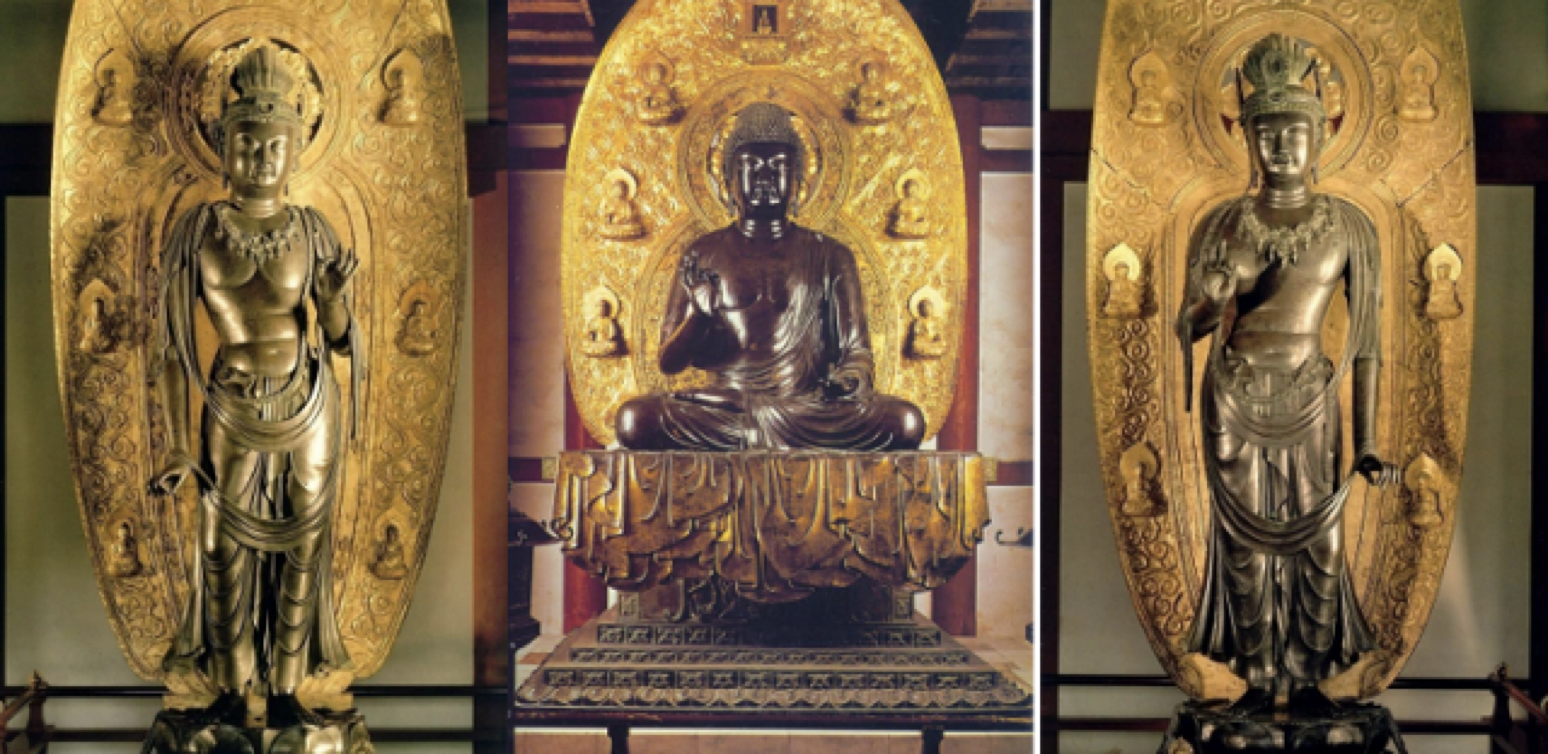
A scene from Kashiwagi Chapter, the Tale of Genji Scrolls, 12th century CE
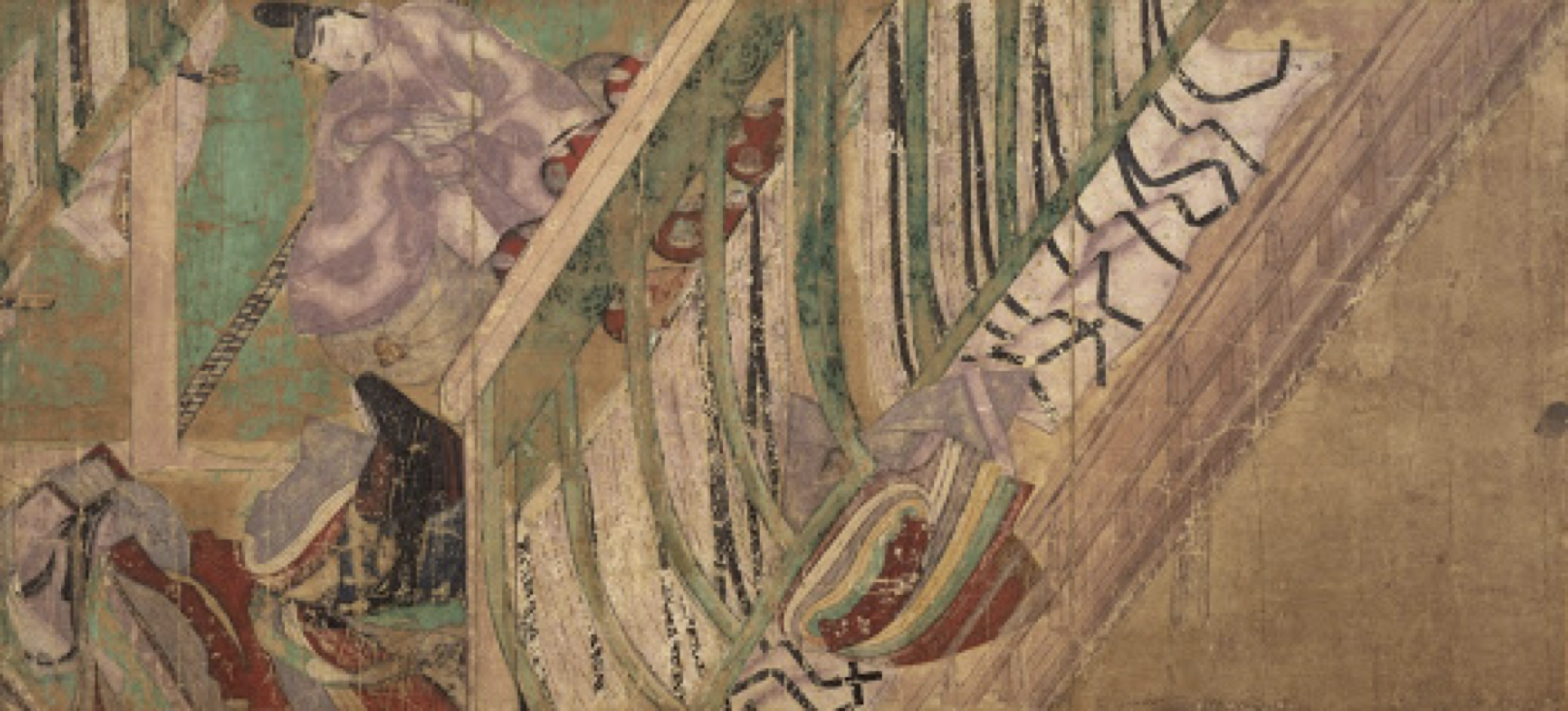
Pagoda
a Buddhist reliquary in the form of a tower-like structure; the tall, slender design originated in Han dynasty China, replacing the dome-shaped stupa reliquary developed in India.
Shintō
indigenous religion of Japan that worships yaoyorozu no kami (Eight Million Gods), various gods and spirits of nature and inanimate objects. Japanese emperors are believed to be the descendants of the one of the supreme deities, the sun goddess Amaterasu. After the arrival of Buddhism to Japan, the elements of the two belief systems were often fused and simultaneously venerated by many Japanese.
Torii Gate
a gate that stands at the entrance to the sacred area around a Shinto shrine. This gate signals that you are about to enter hallowed space, and it is customary to bow one’s head before passing beneath it.
Buddha in the act of Enlightenment, 9th century, Bihar, India (Cleveland Museum of Art)
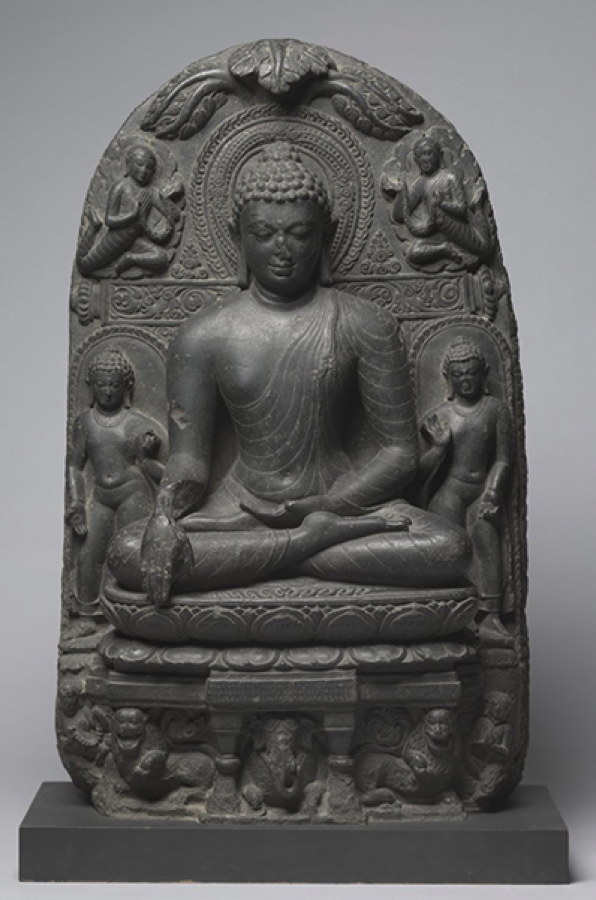
Lion Capital, Ashokan Pillar at Sarnath, c. 250 B.C.E., polished sandstone, 210 x 283 cm (Archaeological Museum Sarnath, India)
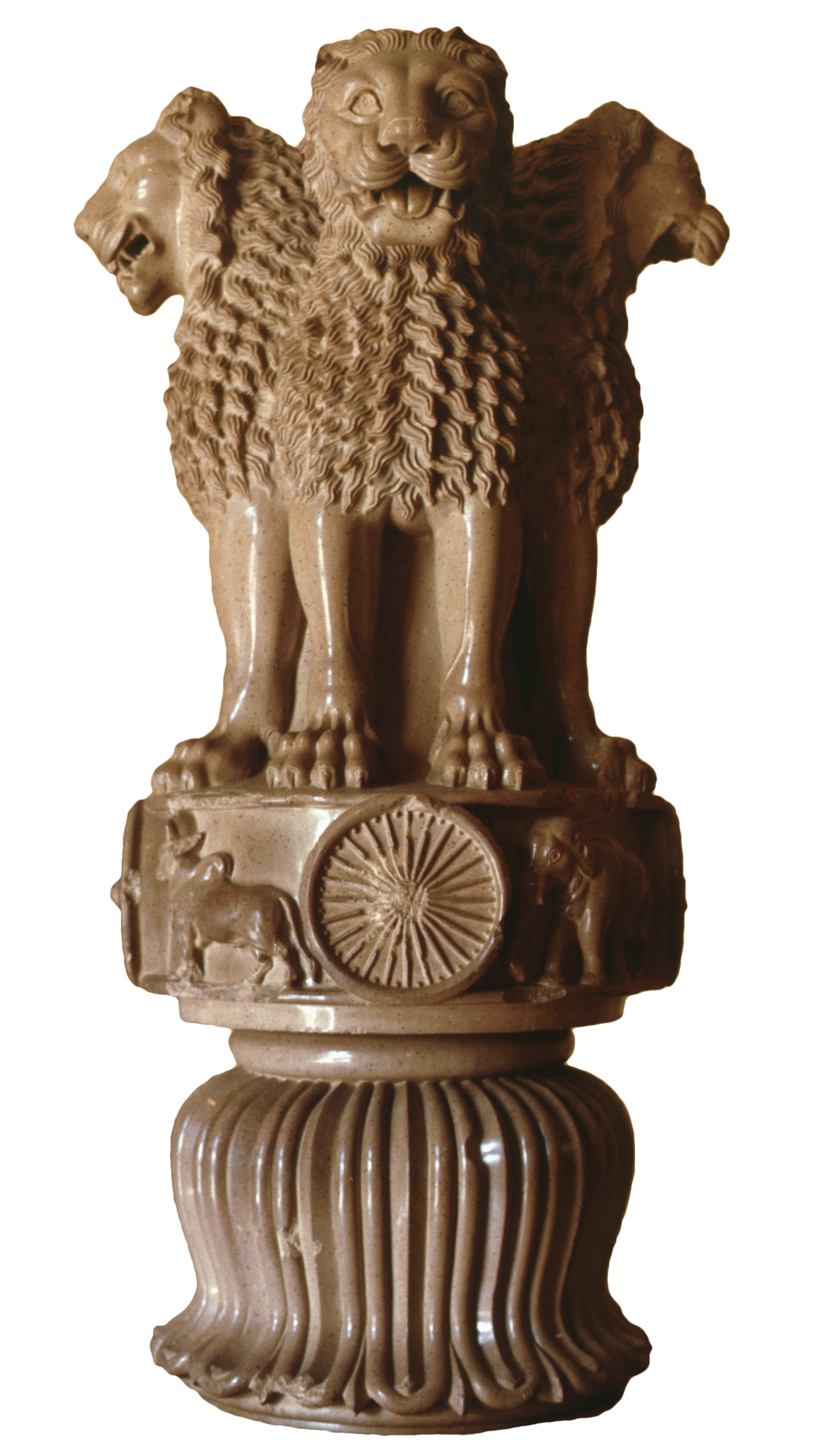
The Great Stupa at Sanchi, third century BCE. Added to in first century BCE

Buddha and Attendants, 320 BCE - 500 CE
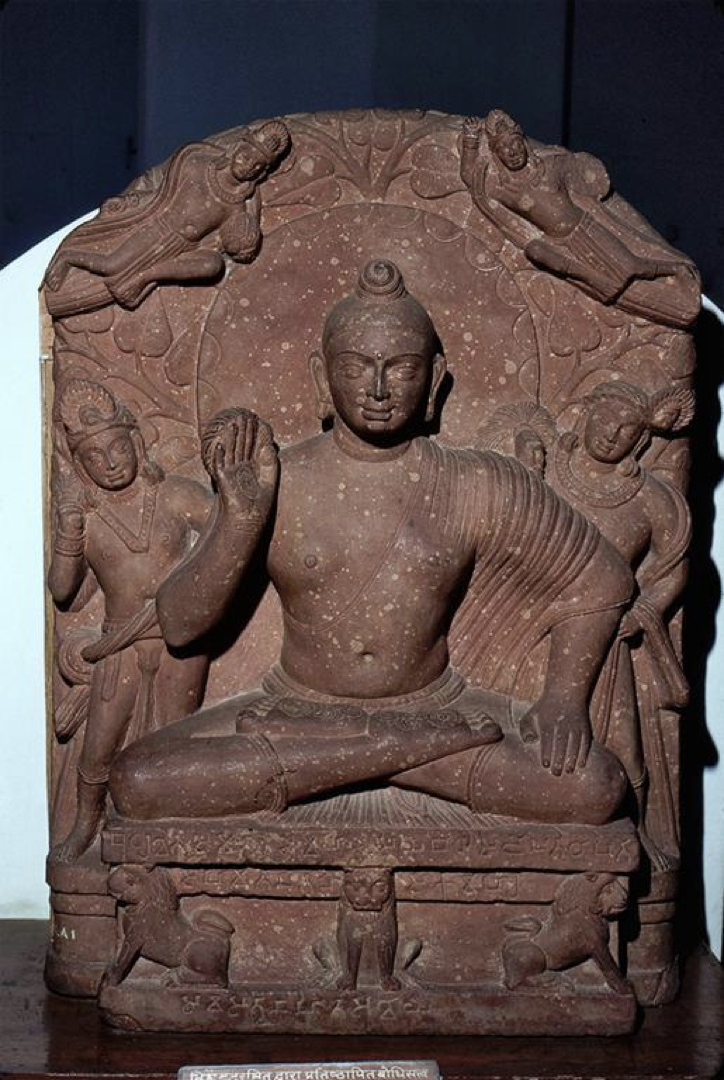
Stupa
a mound-like or hemispherical structure containing relics that is used as a place of meditation.
Mudras
a symbolic or ritual gesture or pose in Hinduism, Jainism and Buddhism. While some mudras involve the entire body, most are performed with the hands and fingers
Elephanta’s Cave of Shiva, c. 550-557
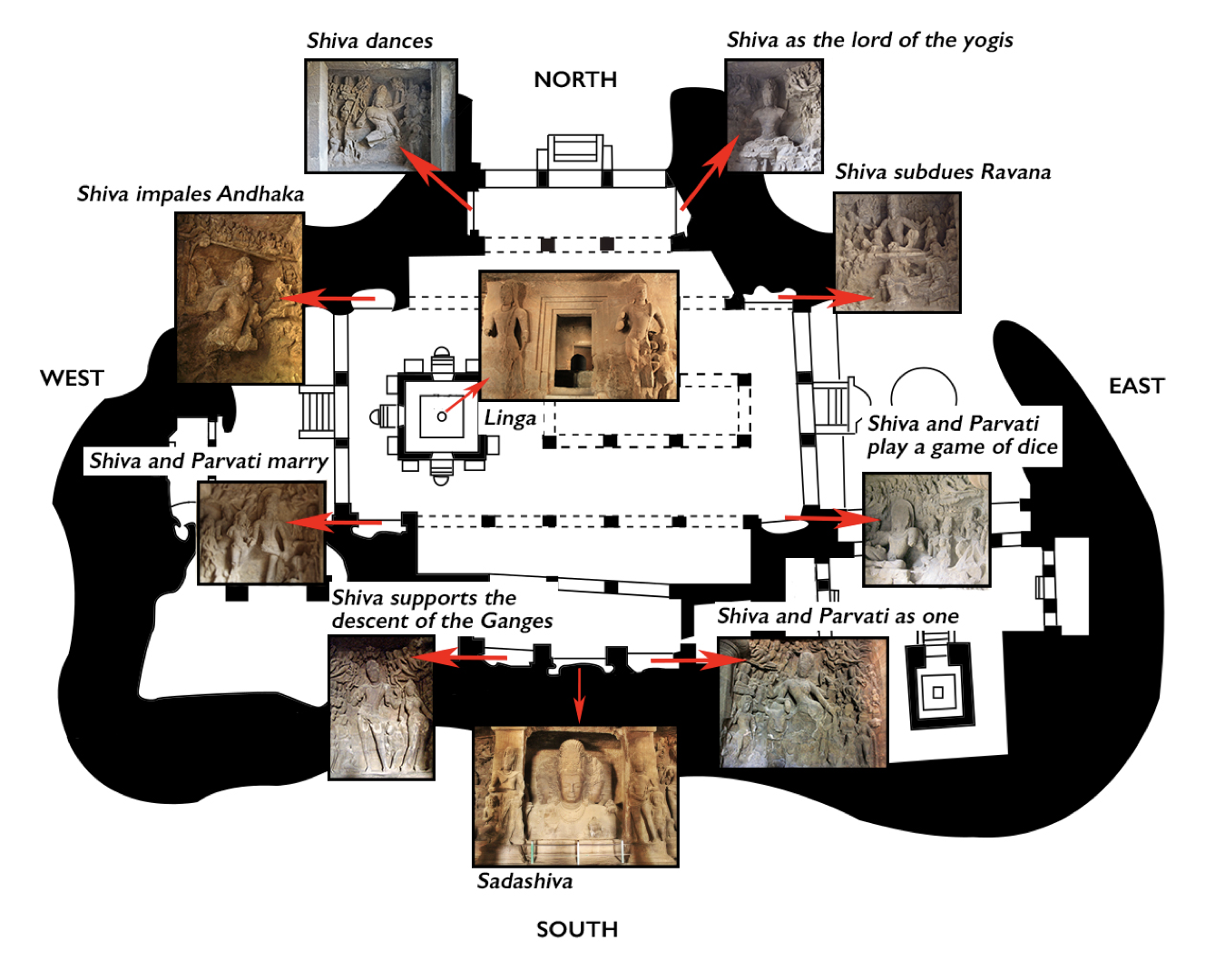
Kandariya Mahadeva Temple at Khajuraho, c. 1004-1035
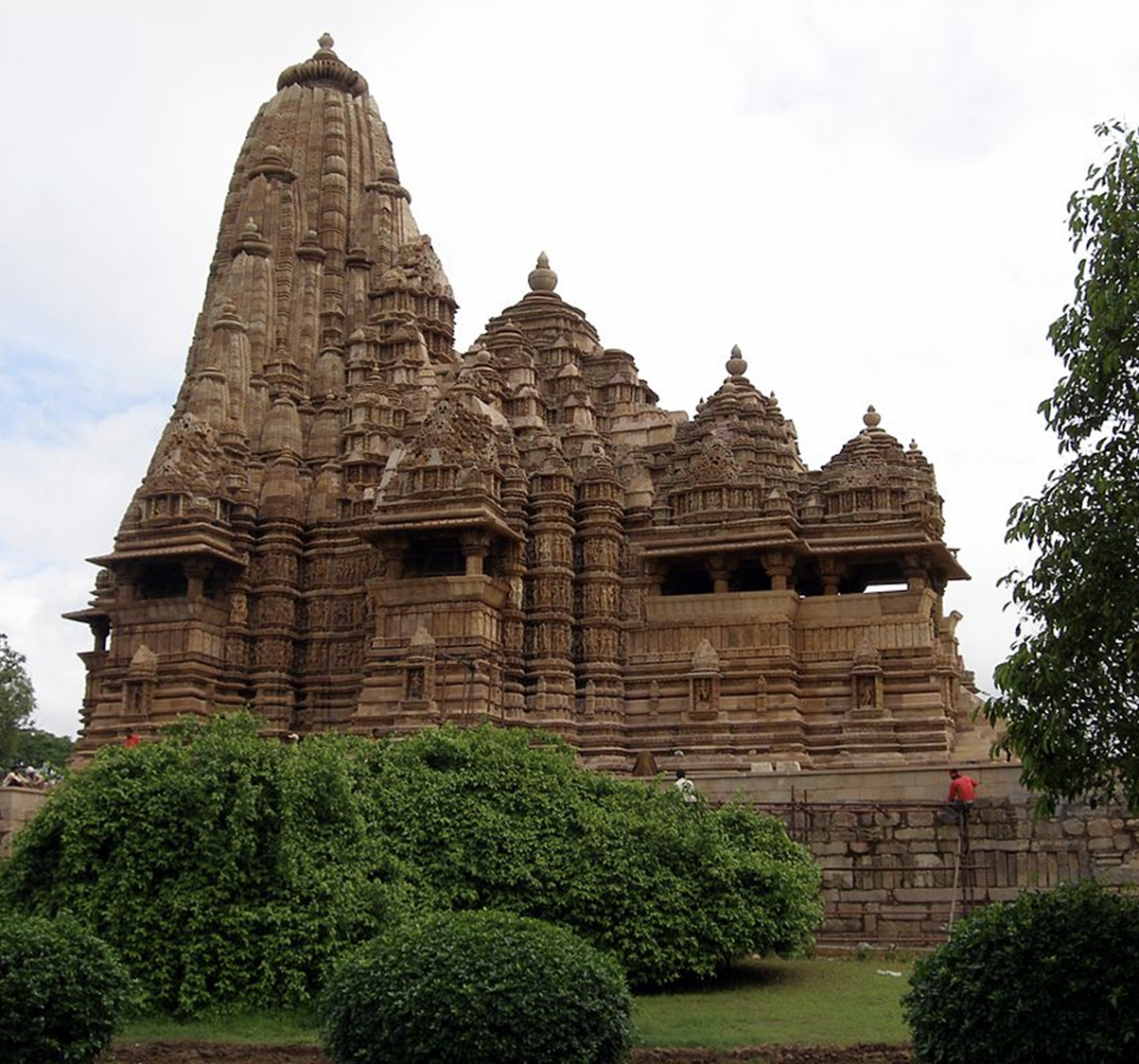
Shiva Nataraja, eleventh century
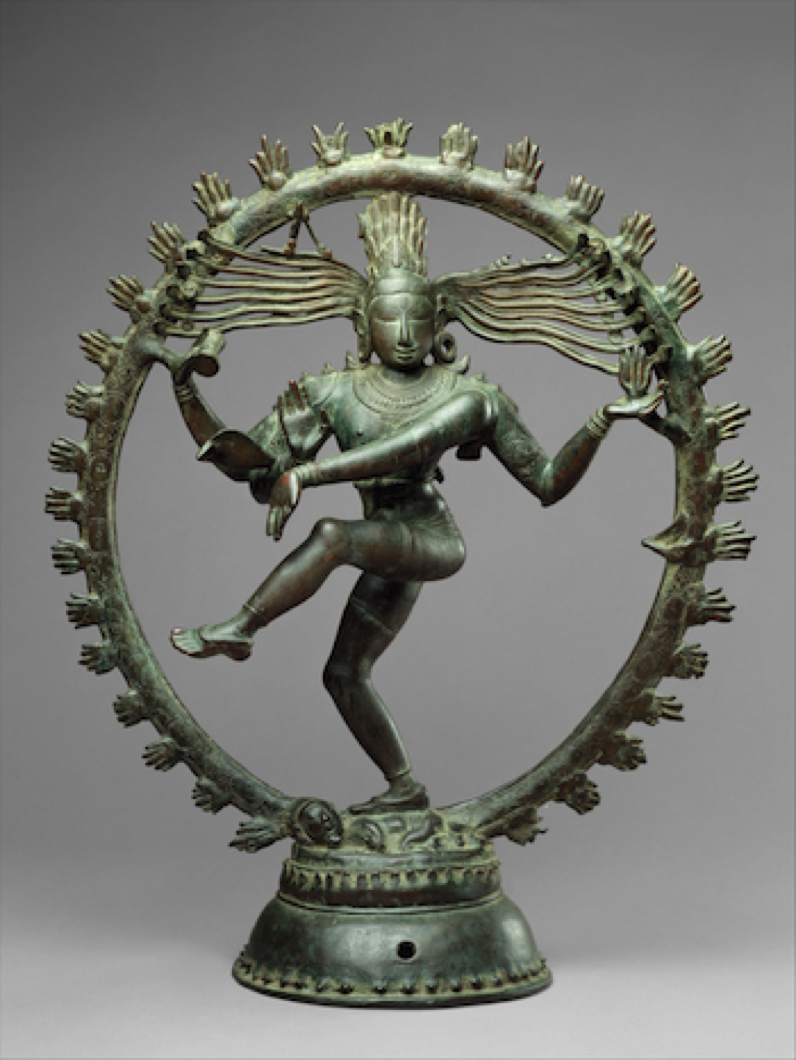
Aryan
term originally used as an ethnocultural self-designation by Indo-Iranians in ancient times,
Vedas
ancient Hindu scriptures, written in early Sanskrit and containing hymns, philosophy, and guidance on ritual for the priests of Vedic religion.
Henotheistic
the belief in and worship of a single god while accepting the existence or possible existence of other deities
Linga
a symbol of divine generative energy, especially a phallus or phallic object worshiped as a symbol of Shiva.
Garima Gospels, c. 390–660

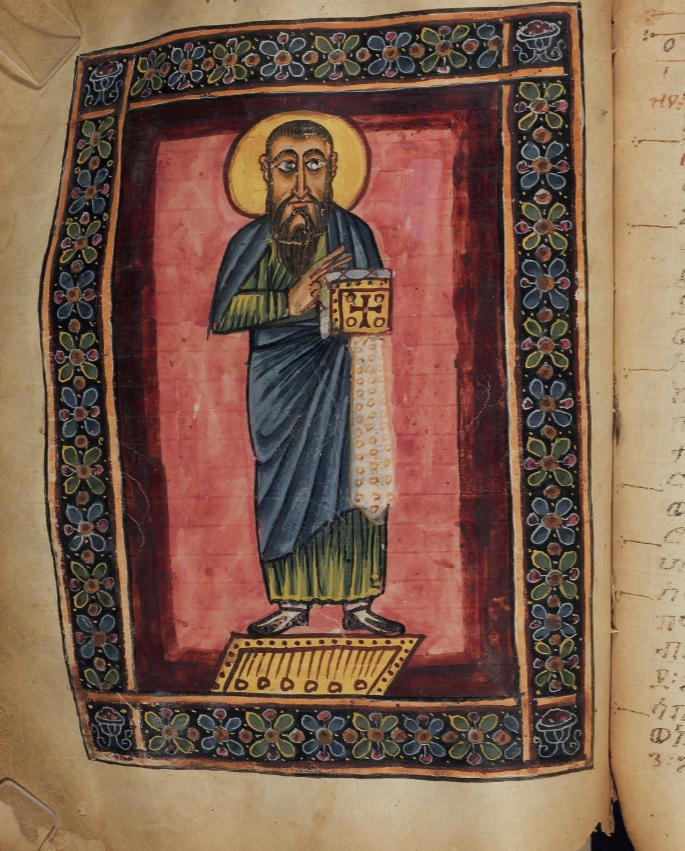
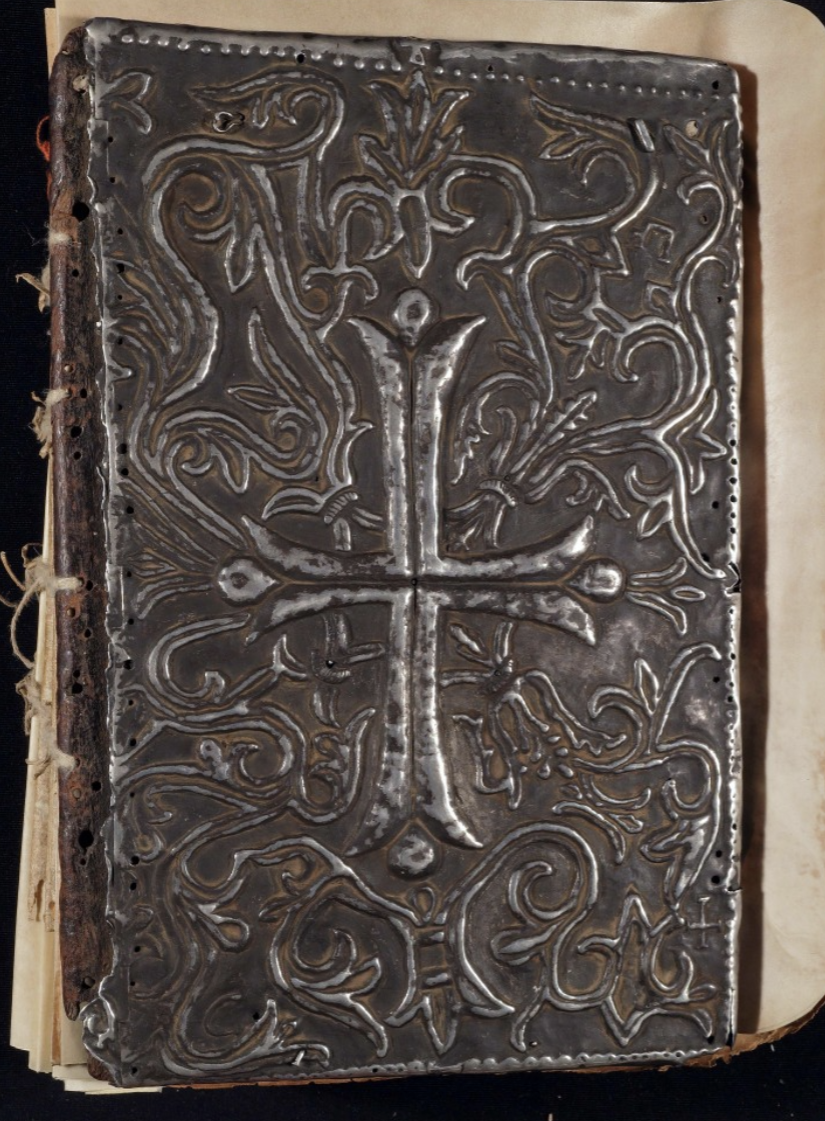

Great Mosque of Kairouan, Tunisia
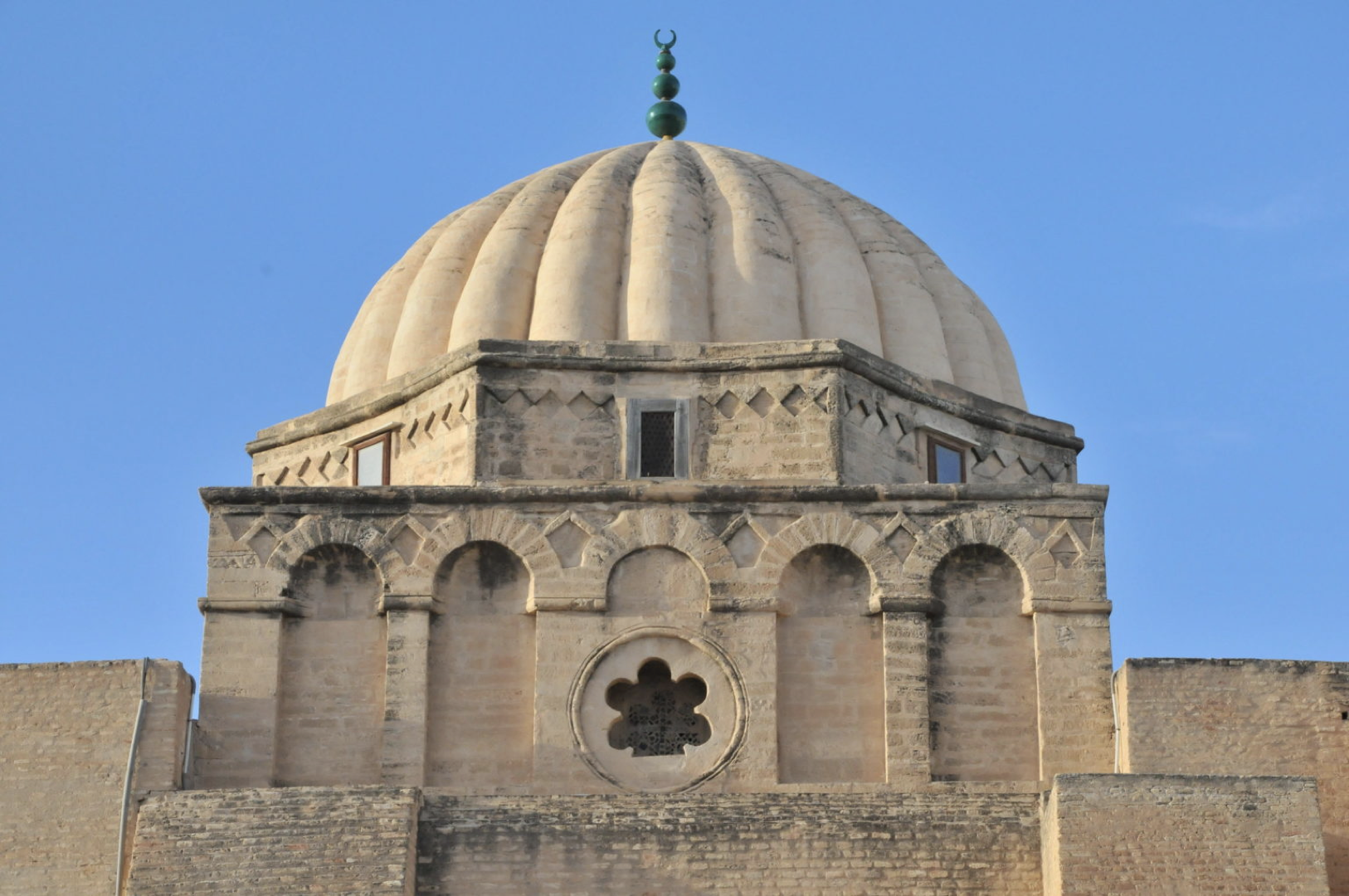
Canon Table
a feature of medieval art and manuscript culture that use numbers and images to organize the Gospels. They were created by Eusebius of Caesarea in the fourth century.
Seated figure, Middle Niger artist, 13th century
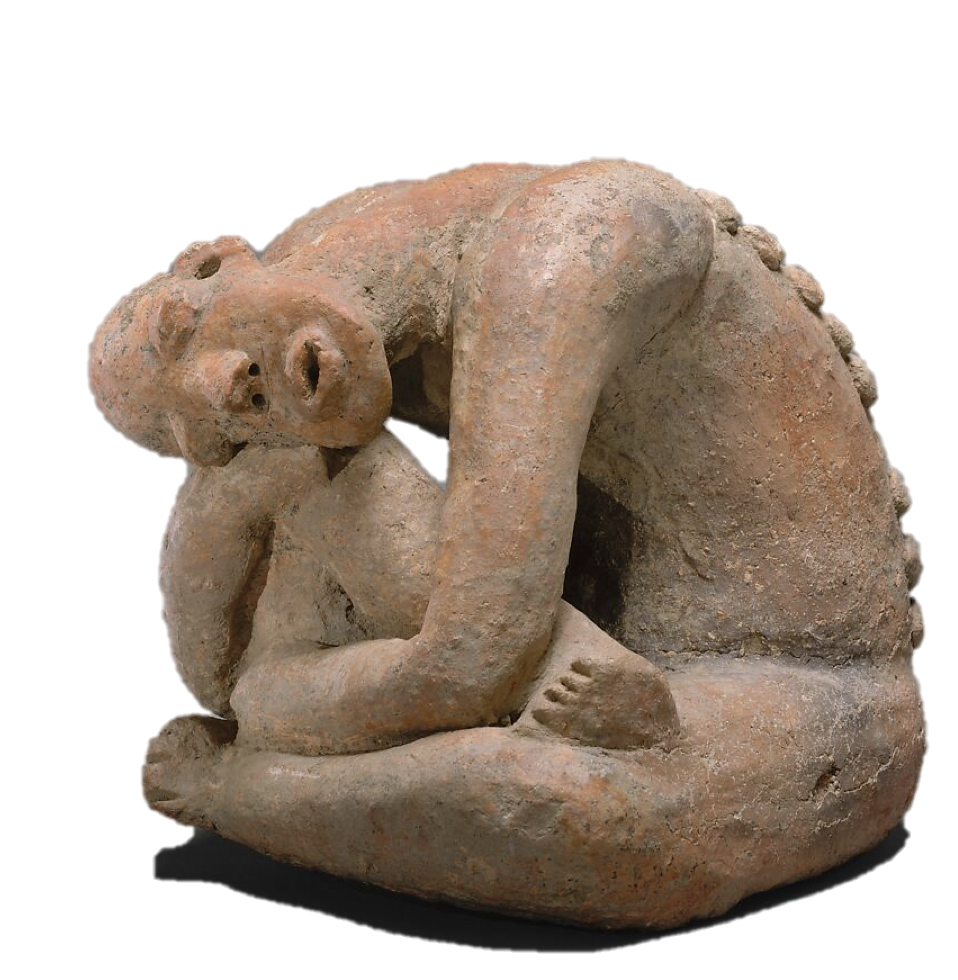
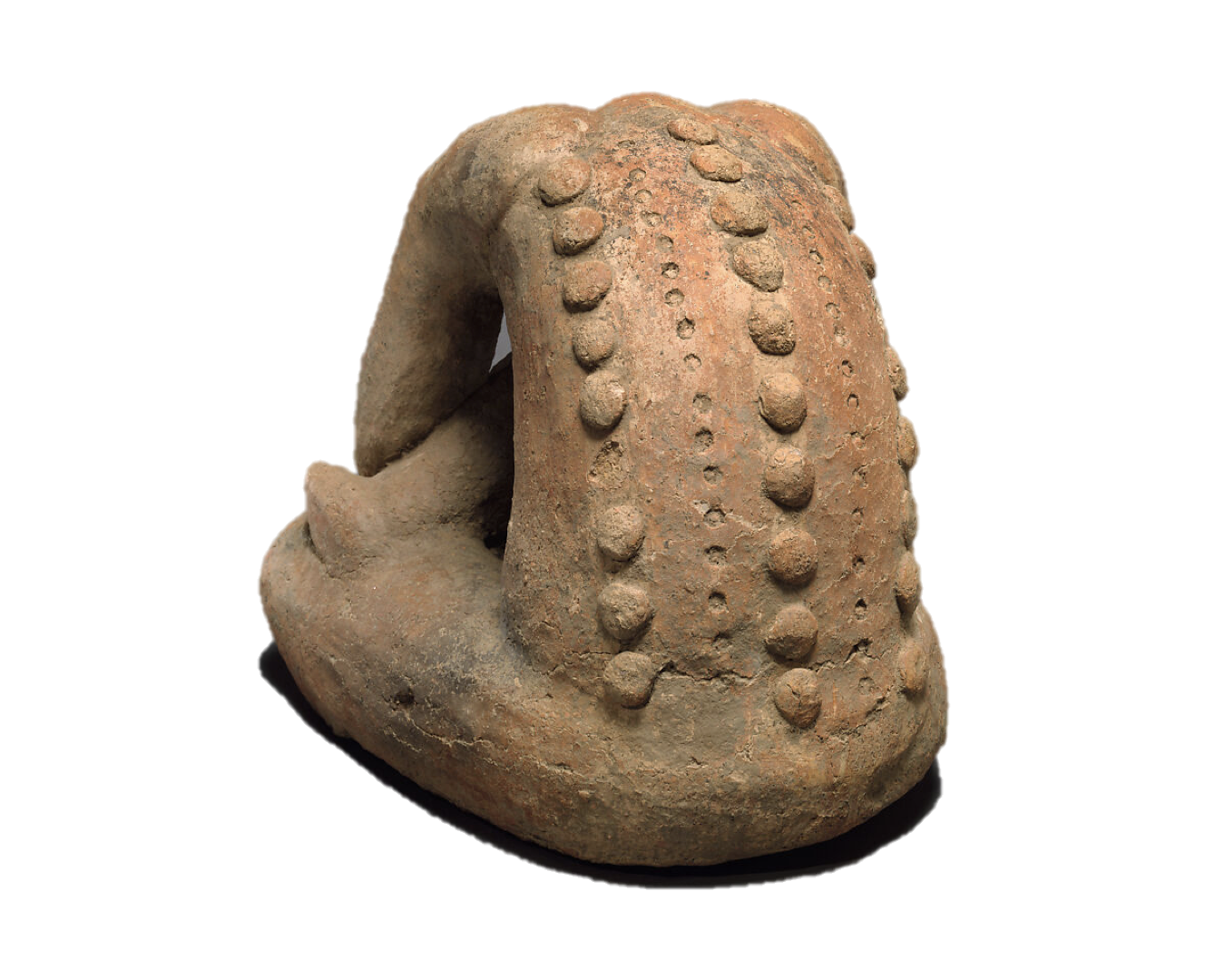
Shell Vessel with Leopard from Igbo-Ukwu, Nigeria, c. 9th–11th century C.E., leaded bronze, 8 ⅛ inches
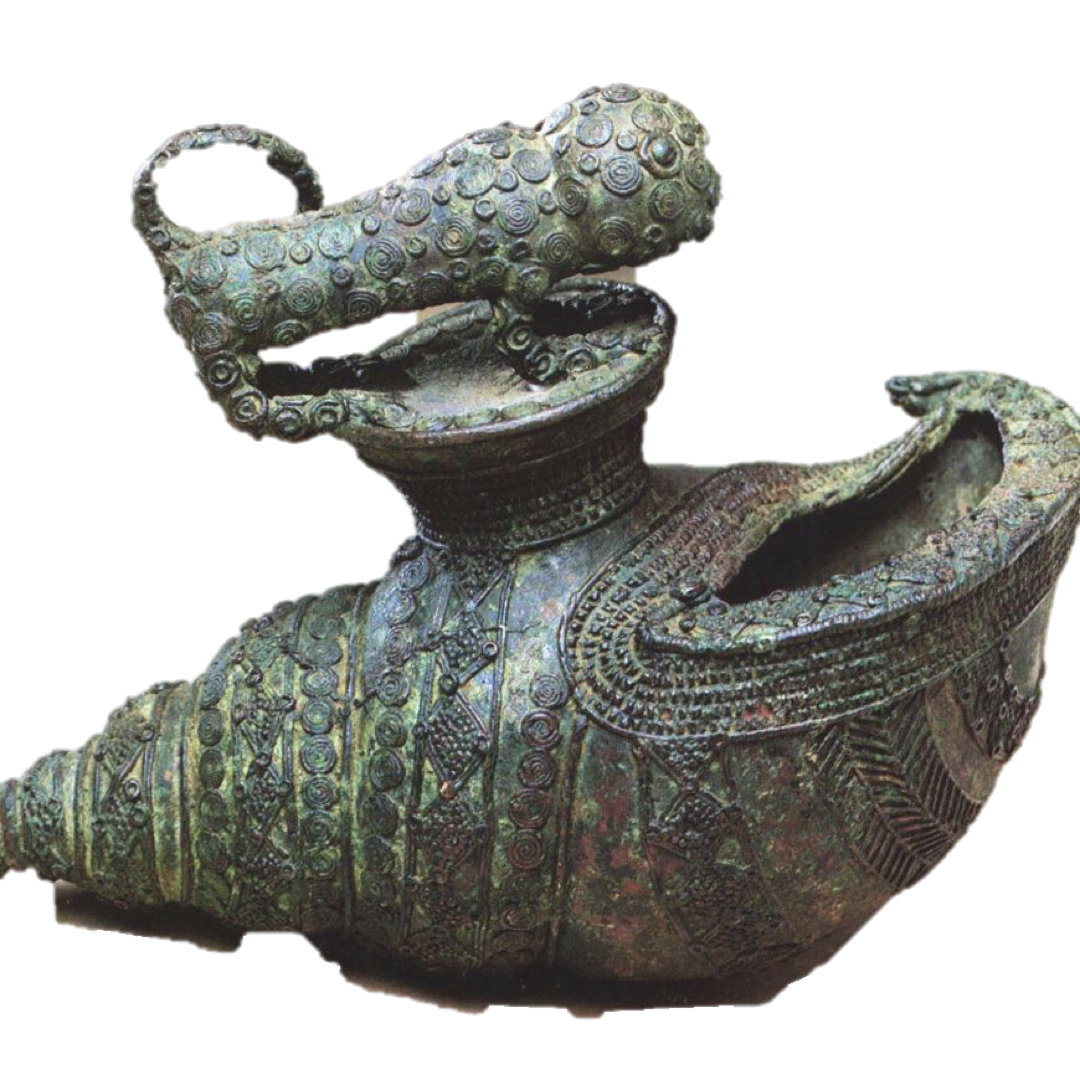
Ife head: Brass head of a ruler (Ori Olokun), 1300–1450, brass, made in Ife, 35 cm high
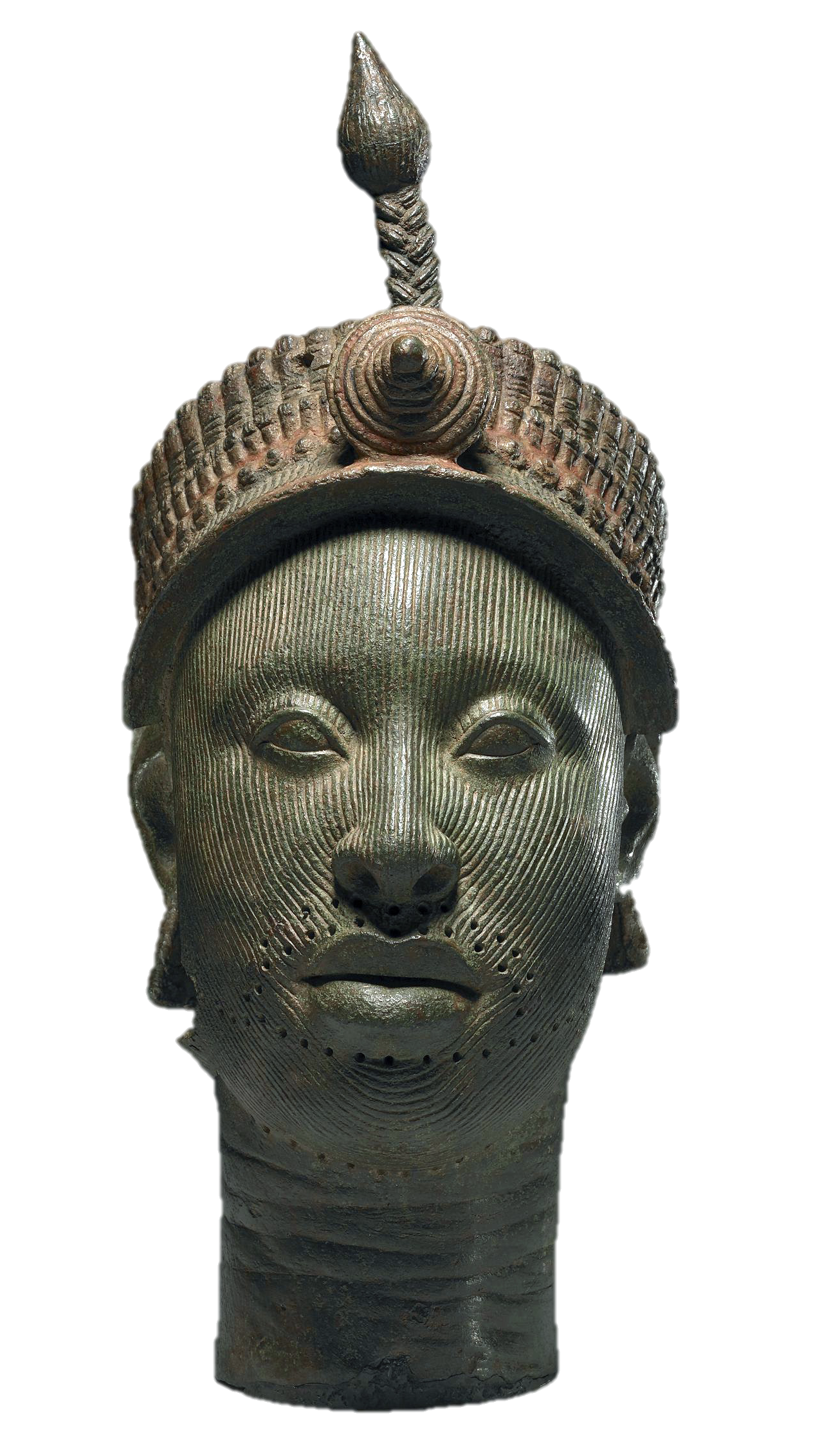
scarification
the practice of scratching, etching, burning/branding, or superficially cutting designs, pictures, or words into the skin as a permanent body modification or body art.
skeuomorphic
representing a utilitarian or natural object using materials unrelated to the object itself, often to enhance its symbolic or ritual significance